Contents | July 2025
10

by Kathy Hosler
28

ALSO INSIDE
todd@barkleigh.com
adam@barkleigh.com
gwen@barkleigh.com
rebecca@barkleigh.com
luke@barkleigh.com
laura@barkleigh.com
brandi@barkleigh.com
carlee@barkleigh.com
evan@barkleigh.com
cassidy@barkleigh.com
allison@barkleigh.com
james@barkleigh.com
karin@barkleigh.com
britany@barkleigh.com
Daryl Conner
Lynn Paolillo
Jennifer Bishop Jenkins
Melissa Viera
ALSO INSIDE
ON THE COVER
its advertisers for their continued support.
- American Grooming Academy16
- Andis2
- Animal Photography48
- AnimalsINK13
- Bandanas Unlimited42
- Barkleigh Store – For the Groomer61
- Barkleigh Store – For the Shop60
- Barkleigh Store – For Your Business58
- Barkleigh Store – For Your Business62
- Barkleigh Store – For Your Clients63
- Barkleigh Store – Promote & Market59
- Best Shot Pet – UltraMAX43
- Best Shot Pet – Scentament Spa9
- Coat Tender37
- Cosmos Bathing Systems7
- Direct Animal Products19
- Double K Industries3
- Electric Cleaner Company22
- Evolution Shears21
- EZ-Groom23
- Governor Insurance Agency31
- Groomer’s Best30
- Groomer’s Choice4
- Groomers Mart44
- Heiniger55
- IV San Bernard | Pet Skin Academy11
- John Stazko8
- Laube57
- Matted Bookkeeping & Finance39
- Max & Molly Wear56
- MetroVac12
- Midmark49
- Odorcide53
- Oneisall35
- Paragon Pet Grooming School18
- Paw Brothers | Ryan’s Pet Supply64
- Pet Boarding & Daycare Podcast45
- PetBizInsurance.com36
- PetLift41
- Puppy Playground17
- Quadruped Pet Care29
- Ryan’s Pet Supplies | Leading Edge Grooming AcademyDigital Only
- SuperZooDigital
- Stallergenes Greer47
- The Absorber Dog Lover’s Towel33
- Wag’n Tails27


 e all know technology can be wonderful, but there are so many different areas in the grooming industry where we underutilize it—which could make a big difference in the health of our businesses, as well as our own wellbeing.
e all know technology can be wonderful, but there are so many different areas in the grooming industry where we underutilize it—which could make a big difference in the health of our businesses, as well as our own wellbeing.
When I got involved in the industry, the one thing that stood out the most was the underutilization of computer systems/software. Coming from a veterinary clinic that switched to electronic records long before most clinics did, I saw what a difference it made in our growth pattern compared to others. It allowed for better recordkeeping, faster completion time, no chart filing and provided anyone in the clinic access to the files.
As I visit different salons, most only use their computer for scheduling and checkouts. However, there are many other options or add-ons that will make you more efficient….
In many of the salons I consult with, I see the groomers leaving at 1-2 p.m. because the time to groom a dog was not accurately figured. As a business person, I see that as three to four hours of lost income if an average work day is 8 a.m.-5 p.m. If you do the math, two extra dogs a day, five days a week, at $60 a groom equals over $30,000 more revenue for the year. What is good software worth to you at that point?
Are you one of the salons where all the dogs are dropped off at the same time of day, and all the groomers/bathers show up at the same time, fighting for the tub? What if you varied the schedule? If you have a bather, have them show up at 8 a.m. along with several dogs that are dropped off to start the day. Then, the groomer doesn’t even come in until 8:30 or 9 a.m. after the bather has done their part, and the dogs are ready to be groomed. Later, the next set of dogs and groomers show up, on a similar schedule, so there is no competition for the tubs.
Sound complicated? Not really—if you have the right software to help you. It is easy to increase efficiency and expand hours working the same people, the same amount of hours, but in different time slots. Your fixed costs (rent, electricity, water, etc.) stay the same, so there is more money for the bottom line.
In a good software program, you should at least be able to quickly look up the number of baths you did in a year, find your product costs and have a pretty good idea of your cost per bath. Why is that important? We often get the idea that a cheaper product saves us money. The reality is that if the product is watered down, doesn’t stay on the pet when applied or isn’t as good for cleaning, you may use more of a cheap product than a more expensive product.
Also, once you get the numbers, you can evaluate the efficiency of the bather (especially new ones). Many bathers believe that if a little is good, more is better. The problem with adding more products is that not only do you have the extra cost of the product, but you also add more staffing time to rinse off the extra product. Staffing costs in this situation are typically more costly than product costs.
Back, shoulder, wrist and lung problems are the most common to show up first. That’s why it’s important to learn better methods of doing de-sheds and other procedures where you breathe in hair fibers. Learn the correct ergonomic ways to lift, stand and hold your scissors to avoid strain.
There are also things that can be purchased to help prevent some of these problems. Ergonomically correct scissors and brushes, lift tables and hydraulic tubs are not just nice to have, but also an investment in your longevity.
Shaker bottles are another common thing groomers/bathers use daily, shortening their ability to groom. Think about how often you shake your products to mix them and the wear and tear on your shoulders, elbows and wrists. A frother, mixer, blender, eggbeater, etc., can easily replace this. Why put that strain on your money-making parts if you don’t have to?
We have all this technology and equipment at our fingertips, but often we don’t take advantage of it. Probably the most common reason is money. However, it will easily pay for itself very quickly. If you can work another 5-10 years by avoiding stress on your body, it will be worth it financially versus the cost now. Or, if you use a computer program that can increase your efficiency, you’re sure to make more money, offsetting the upfront cost. Technology used correctly should not be considered a cost, but rather an investment in your future.
Dr. Cliff Faver graduated with a BS in Biology/BA in Chemistry before getting a Veterinary degree in 1987. He is the past owner of Animal Health Services in Cave Creek, Arizona and now the US distributor for Iv San Bernard products, teaches the ISB Pet Aesthetician Certification program, and speaks internationally on hair and skin. His passion is to merge groomers and veterinarians to aid in helping and healing pets. He is also a member of AVMA, AAHA, AZVMA, Board member with Burbank Kennel Club, and has served on Novartis Lead Committee, Hill’s International Global Veterinary Board, and a Veterinary Management Group.

 roomers today have an almost limitless amount of tools, equipment and resources at their fingertips to make every facet of their job faster, easier and more fulfilling. Can you imagine what it was like to groom before cell phones, the internet and grooming shows?
roomers today have an almost limitless amount of tools, equipment and resources at their fingertips to make every facet of their job faster, easier and more fulfilling. Can you imagine what it was like to groom before cell phones, the internet and grooming shows?
I contacted some groomers that started their careers years ago before all the modern conveniences were available. Here are some of their stories of what it was like to groom “back in the olden days…”
When self-taught groomer Betsy Schley began grooming, her first pair of clippers were the Oster Manual Hand Held Hair Clippers. They were not electric—they operated by human power; every squeeze of the hand moved the cutting blade back and forth.
“I used to groom Standard Poodles in a Dutch Clip for five dollars on an old Formica kitchen table in my basement,” Betsy recalls. “About 1967, I got an A2 clipper. I still have it and it still works. They would get so hot they would burn my hand as I working.
“Back then there were very few shampoos and products to choose from,” she continues. “Between those and the harsh dips we had to use, my hands would often be bleeding. Thankfully, better products came along.
“I had one of the very first Kool Dry dryers that Ron Goldman made—what a lifesaver,” Betsy adds “Before that I would have to lug my big stand dryer to shows, and would often blow circuits when using them in hotel rooms while preparing my dogs for a competition.”
Groomer Michelle Temples has also seen and embraced many changes to the industry in the over half-century she has been in it.
“When I started grooming, there were only skip-tooth blades,” Michelle shares. “They were so dangerous…especially the skip-tooth #7. The tables we had were back-breakers. They had little fold-up legs, and if you needed them higher, you put blocks under the feet.
“Now, I am semi-retired but still grooming 5-6 dogs a day. Instead of working seven days a week, I work four. Life in the grooming industry has been a wild ride, but I wouldn’t change a thing,” concludes Michelle.
Another veteran groomer, Vickie Haywood, spent 55 years grooming, breeding, and showing poodles and other breeds. She has finished many champions and also taught obedience training for 35 years.
“My sister, Bobbie Cheely, gave me my first poodle from one of her litters,” Vickie recounts. “She taught me the basics of poodle grooming, using seven-inch barber scissors and a Sears animal clipper. We dried them with the hose from a bonnet human hair dryer, brushing them as we held them on our laps. In 1984, I bought my first HV-style dryer, an Orange Commander, and never looked back.”
Many early groomers were self-taught, including Karen Kinleyside, who started small, but quickly found that the world of grooming held endless possibilities for her.
“I started my grooming career in 1978,” begins Karen. “I was married and had a two-year-old child, so I was pretty much stuck at home. I wanted to be a contributing partner in our marriage and I loved the idea of grooming, but had no idea how to break into it except for picking up clippers and scissors and start cutting hair.
“My mom sent me a grooming book with pattern cuts,” she continues. “I had a universal curved slicker brush, cheap scissors, and no real idea of what I was doing. I practiced on my own Toy Poodle to learn. Trial and error was a big part of how I started out.
“Shortly after I started working [at a boarding/grooming facility], we entered the world of computers,” Karen adds. “Imagine my amazement when I was able to Google grooming—and the world of everything grooming was at my fingertips!”
Groomer Barbara Efremenko is a testament to the longevity of groomers and of some of their equipment.
“I have an old pair of Dubl Ducks that I still use and cherish today,” Barbara adds. “They’ve been sharpened so many times that only the bottom portions of the lettering are left. And I am still using a Romani Clipper Vac that was manufactured in ‘86. Some things have not changed!”
We’ve all heard the phrase, “Necessity is the mother of invention.” Well, Lori Cook Briggs, who has been grooming since the 70s, found a way to solve a problem many groomers have experienced…
“I started grooming SPCA dogs to help them get adopted,” says Lori. “Back then, the best clippers were the Oster A5. But, they would get extremely hot in your hands while grooming and they had vents that blew out hot air and fine hair splinters. When the brushes in the clipper would wear out, the blades would start to drag in the coat. I would try to scissor out the unevenness to get a smoother finish.
“I remember the day I discovered reverse clipping,” continues Lori. “I was grooming a Cocker Spaniel named Ruffles. My clippers were acting up and leaving bad lines. I kind of laughed and said, ‘Ruffles has ridges!’ It was then that the idea came to me to try to use a longer blade in reverse to smooth it out. I was amazed!”
Maria Hetem began her career in 1980 and became one of the first mobile groomers. She has faced many challenges—good and bad—during her career, but she is still going strong.
“There were no mobile van manufacturers then,” explains Maria. “I had to buy a van and have a body shop chop off the top and put on the extension. Then, I had a motor home company do the build-out inside. There were no cell phones, but I managed to be a mobile groomer.

“Boy, did we do things different in the olden days! Then we didn’t have cell phones or digital photography. Now, we are able to document everything with our phone.”
-Dawn Omboy

“I attended the first Groom Expo, and I remember when Groomer To Groomer magazine was nothing more than a flyer folded in fours,” Maria adds. “I wouldn’t exchange my experiences for the world and I still love my chosen career, I’m just a little slower at it these days.”
Mitra Klamanesh began her career grooming in the back of a feed store. While some of the dogs would come in to be groomed four times a year, the majority of dogs she did were only groomed once every one or two years.
“In my desire to learn and do better, I would go to dog shows and follow the handlers around learning how to properly do a profile trim,” continues Mitra. “I took actual 35mm pictures of the show dogs and printed them out and laid them on my counter. Then looking at the dog on my table, I tried to transform that dog into as close to a show dog as I possibly could. Now, you can pull everything up on the internet!”
Dawn Omboy, who became known as “The Queen of Color” through her fabulous creative grooming and coloring skills, remembers the struggles early groomers faced and explains how she helped bring about positive changes in the industry.
“Boy, did we do things different in the olden days!” exclaims Dawn. “Then we didn’t have cell phones or digital photography. I remember telling someone on the phone, ‘Well, if I could see your dog on the phone, I could give you a more accurate price.’ Now, we are able to document everything with our phone.
“The struggle of competitiveness and jealousy between shops was horrible,” Dawn adds. “People talked bad from one shop to the next instead of being helpful. It was for that reason I started the Internet Mingle at Hershey’s Groom Expo, to bring groomers together and have an even better time at the shows getting to know the friends we met on the message boards.”
The grooming industry has come a long way from flea dips, five-dollar grooms and archaic equipment. We can be grateful for all the modern advancements that make our jobs easier and our role in pet care more respected. Good riddance to the olden days!

by Keith Loria
Photos provided by Pampered Pooch
 ver since she was a little girl, Rachel Ferreira has loved dogs, and her passion only grew as she got older.
ver since she was a little girl, Rachel Ferreira has loved dogs, and her passion only grew as she got older.
“In high school, I got a job at a pet store, and I absolutely loved seeing new puppies come in and go home with their forever families,” she shares. “One day in 2015, a woman walked into the pet store and asked me a simple question, ‘What do you want to do with your life?’ I told her I wasn’t sure yet, but it had to involve dogs.”
As fate would have it, the woman owned a grooming salon and invited Rachel to visit and offered to teach her how to groom.

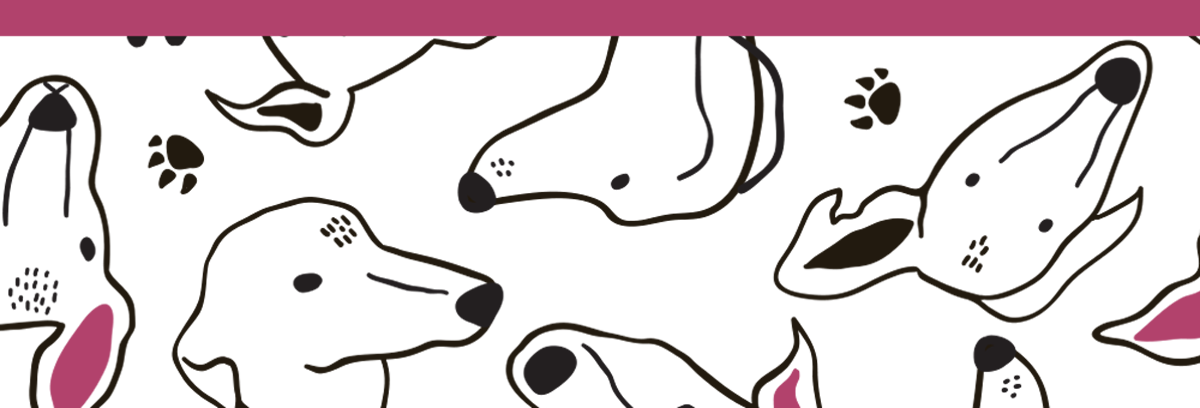

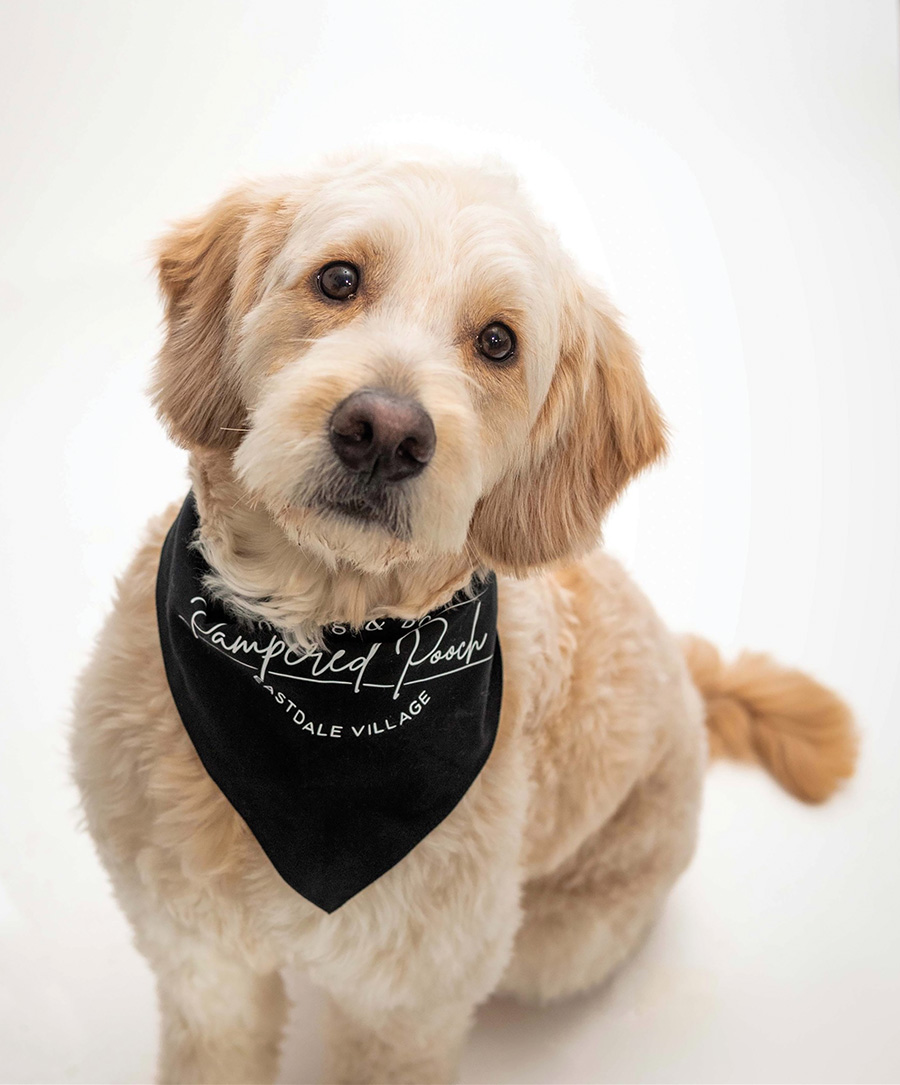
When her mentor decided to move across the country, Rachel saw it as her opportunity to take what she had learned and build out her own dream salon, and thus Pampered Pooch Grooming & Boutique was born.
“My experiences at her salon taught me what I wanted to bring into my own shop,” she explains. “I wanted it to be a unique and luxury experience for my clients and their dogs, while having it be a very calm, inviting, and comfortable atmosphere to be in. I also knew I wanted it to be more modern, offering online booking and having more of a presence on social media.”
The initial strategy was the location Rachel chose for Pampered Pooch—a main road in Eastdale Village, a community located in Poughkeepsie, NY, with approximately 400 apartments and townhomes.
“Most residents own dogs, and people that walk around here to shop bring their dogs as well,” she adds.
“I knew it would be worth the wait to build out the salon of my dreams, but I did not want to wait around for it to come to life because I was ready to start Pampered Pooch,” Rachel recounts. “I decided to pivot my plan and opened a temporary location down the road from Eastdale Village in October of 2021.
“From there, I started to build my clientele and formed connections with them and their dogs,” she continues. “This temporary space became the foundation of what Pampered Pooch is today, even if that was not always my plan.”
Finally, in May of 2022, Rachel opened the doors to her dream salon—the one she envisioned back in 2020, where each dog gets a personalized experience.
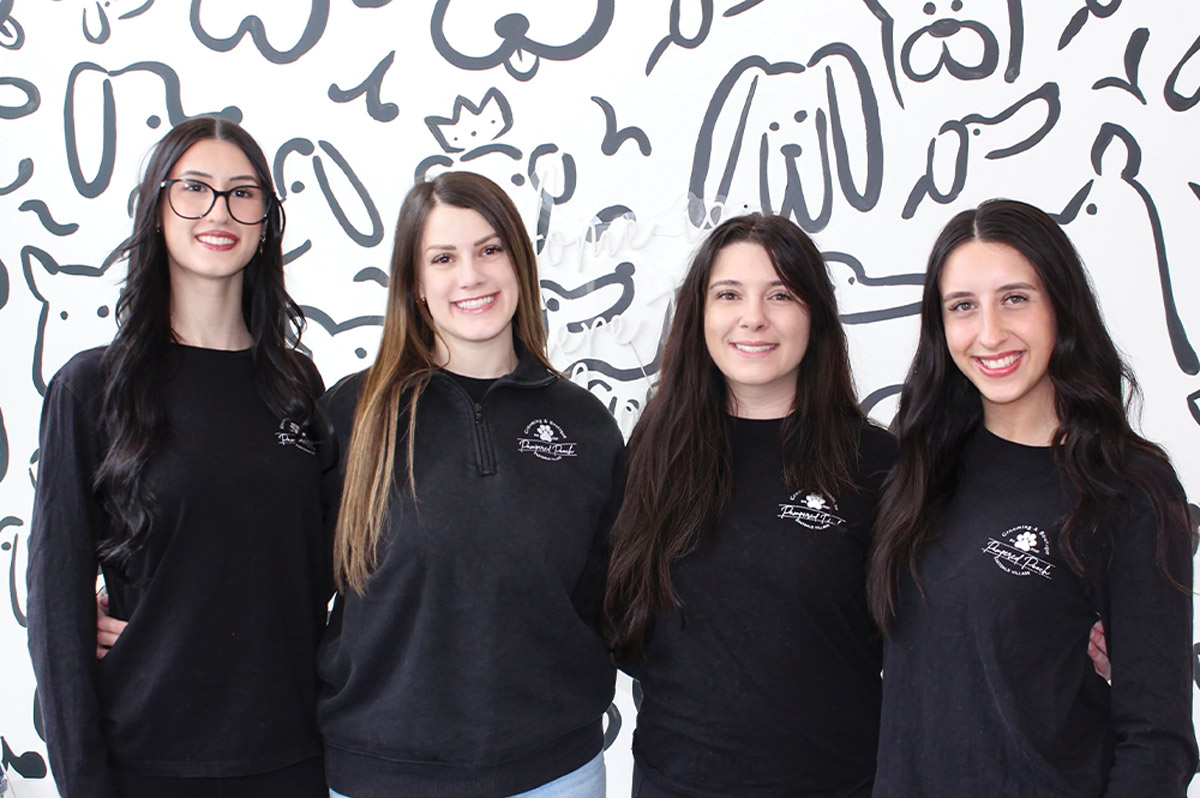


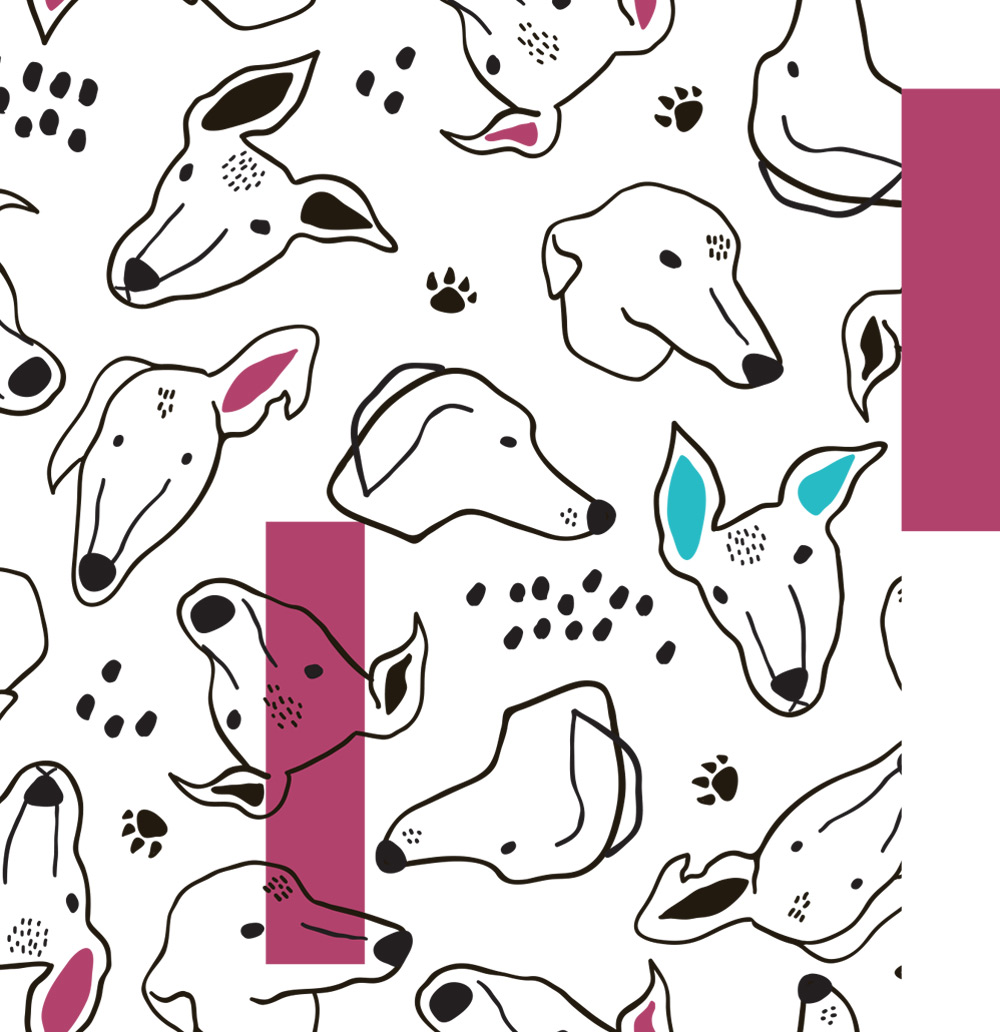
Pampered Pooch offers a variety of different service packages and add-on services. That way, clients can give their dogs a spa day they themselves might even be a little jealous of.
However, one immediate gap Rachel knew she would have to overcome was the shortage of dog groomers in her area.
“Most of the local, private-owned salons only have the owner grooming alone or alongside very few employees,” she shares. “I always imagined my salon being big and well-known, filled with a talented team. I decided to overcome this by teaching my first employee, who is also a cousin of mine, just how Jen taught me. I knew opening my own salon at a young age was going to be difficult, so having someone I could fully trust was important to me.”
“I make it a priority to understand each team member’s unique strengths and grooming specialties so their skills are used effectively every day,” she says. “On our website, you can find a short bio for each groomer, including their favorite types of dogs to work with. This way, clients can book appointments with the groomer who is the best fit for their pooch.”
Wanting to tap into digital media, Rachel decided her niche would be that every dog would get a photo at the end of their groom to be texted to the client after the service.
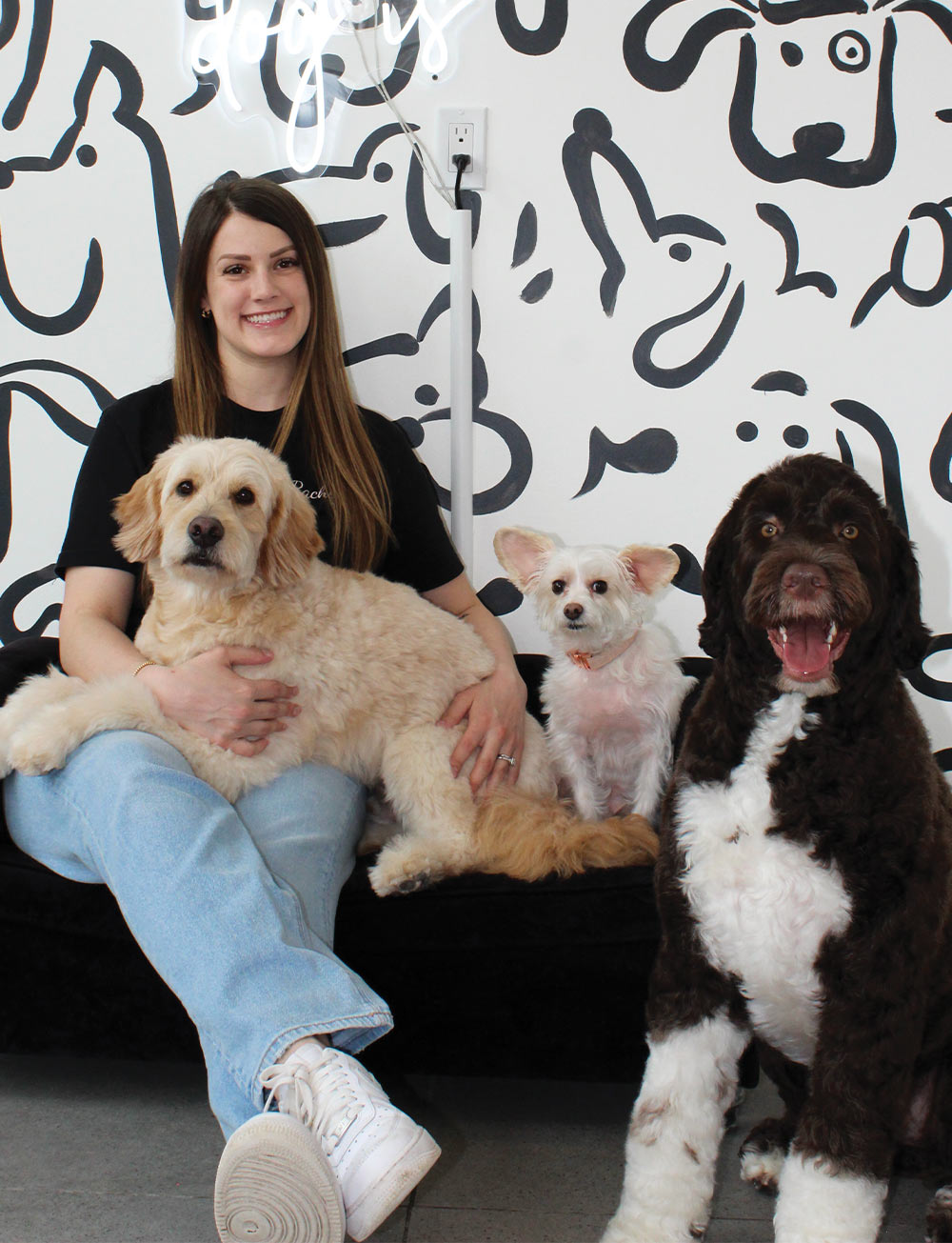
Pampered Pooch also offers birthday photo packages as an add-on service. Clients can book this online for their dog’s birthday or “gotcha” day.
When Rachel first opened Pampered Pooch, she had a goal in mind to help dogs in need. So, she reached out to HVARS, a non-profit animal rescue, wildlife rehabilitation center and low-cost vet service clinic in the Hudson Valley, and asked if she could groom the dogs waiting to find their forever homes.
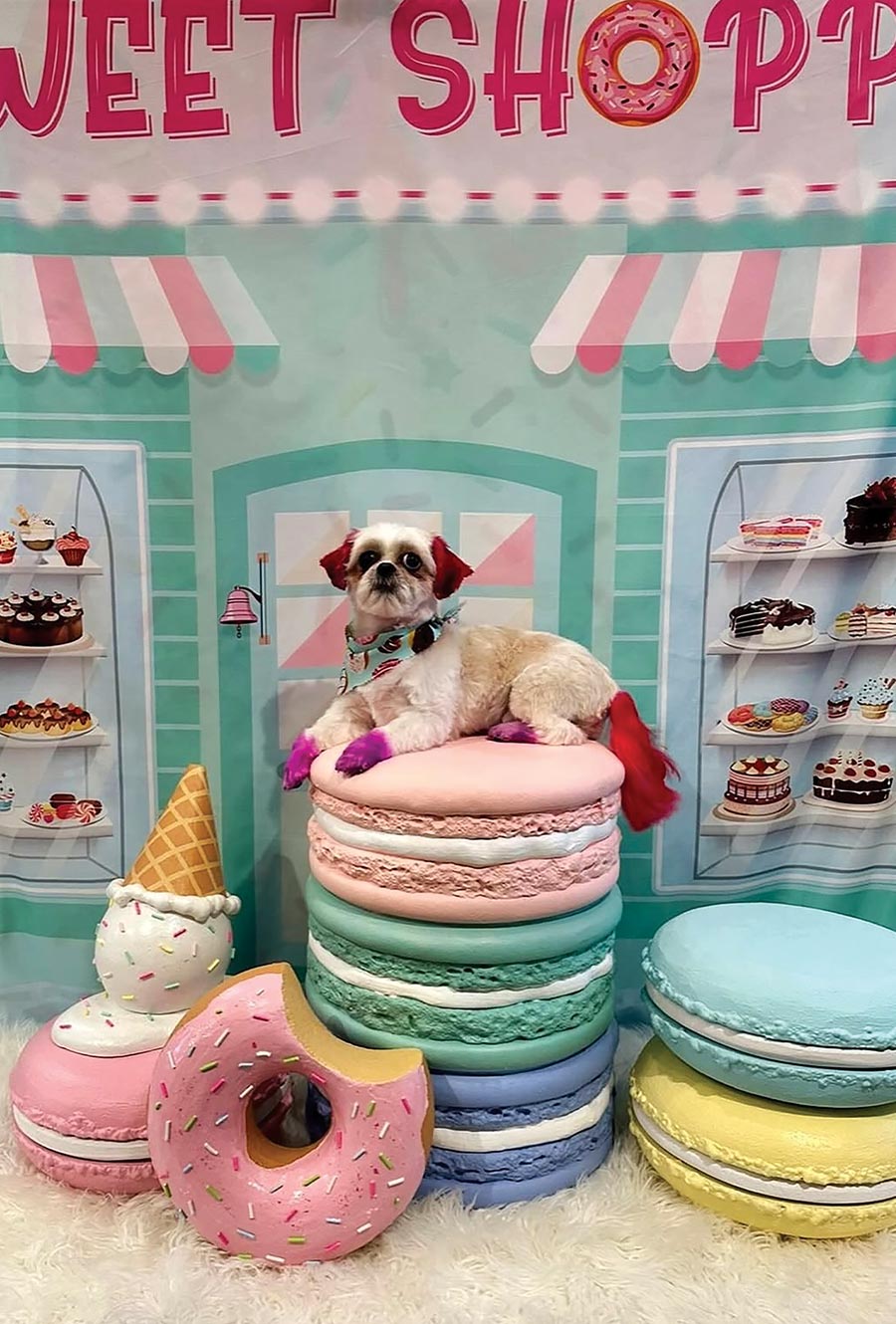
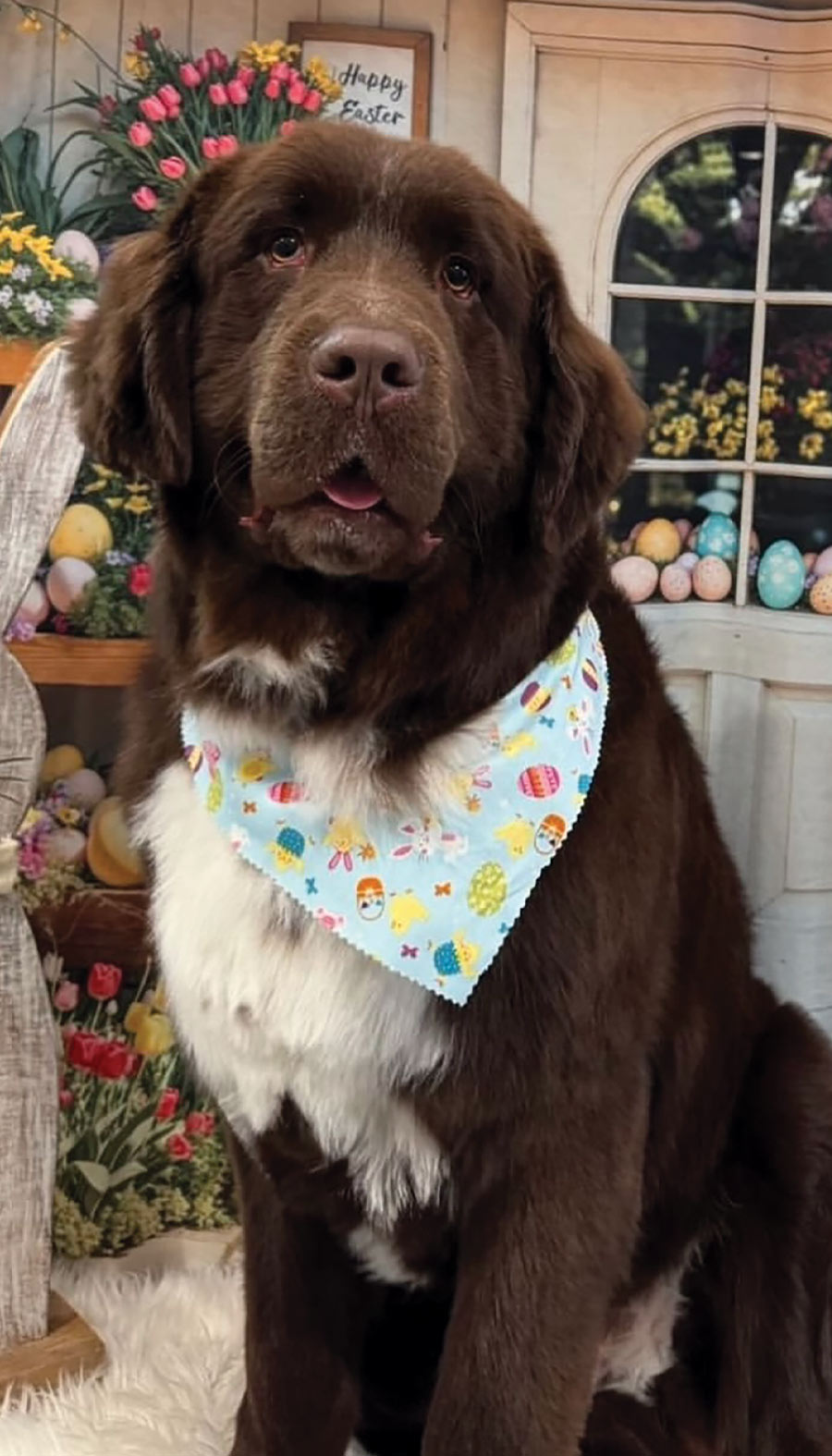

The salon also partners with another local, small business twice a month, Woof & Hoof, a service that offers doggie daycare and many other services. Woof & Hoof’s “bark bus” van brings any dogs that signed up for a spa day to Pampered Pooch where they are pampered for their owners.
“This service is very convenient for people,” Rachel says. “They go to work, their dog gets picked up by Emily and her team in their van, they go to daycare, then to us, and home before their parents arrive, fresh and clean.”
It’s always been Rachel’s ambition to continue to grow, innovate and provide top-notch care to her clients.
“Looking ahead, I want to open at least two more locations in the near future to be able to expand and take in new clients again,” she explains. “It has been so exciting exploring different areas in the Hudson Valley with the intention of replicating the same modern, stylish, and comfortable atmosphere we have created in our salon at Eastdale Village.”
To reach that dream, Rachel plans to start teaching more staff members to fill these future positions.
“A very fulfilling part of my grooming journey is sharing my knowledge and wanting others to thrive in the industry,” she shares emphatically. “Watching the team members that I teach grow into their passion is very rewarding—almost as much as giving a dog the perfect spa day!”
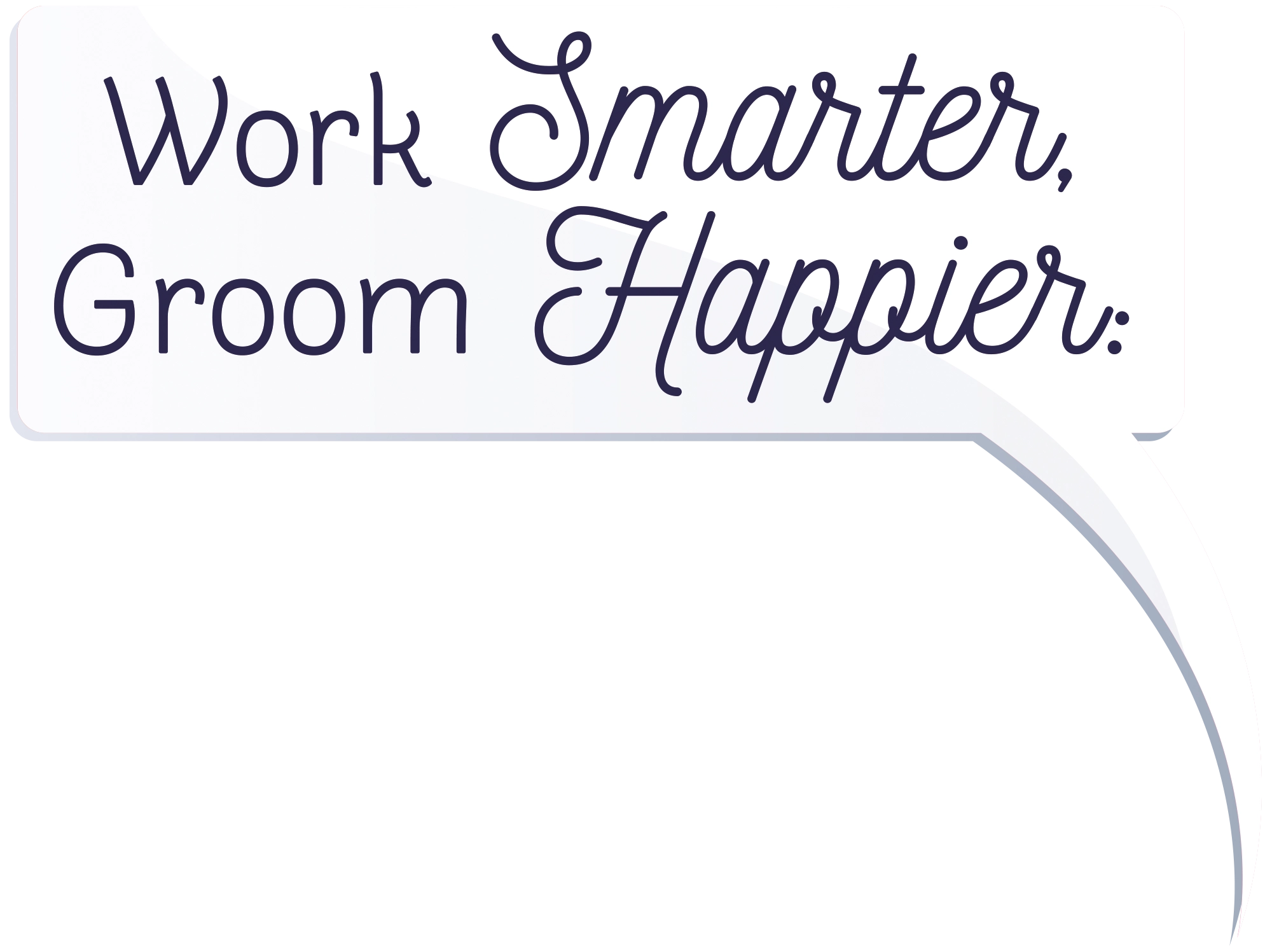

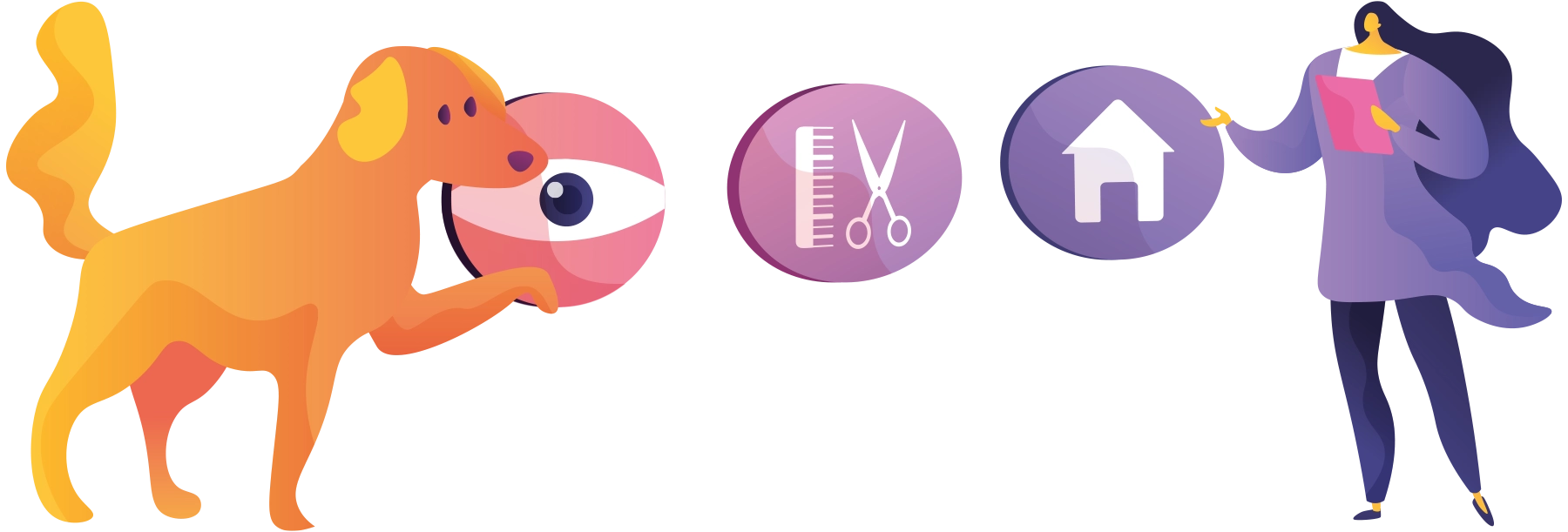
 icture this: It’s a busy day in your grooming salon. Your schedule is packed, clients are calling, and you’re trying to juggle reminders, appointment confirmations and keeping everything running smoothly—all while making sure each pet gets the best care. By the end of the day, you’re drained, and not just from grooming, but from all the extra tasks that eat up your time and energy.
icture this: It’s a busy day in your grooming salon. Your schedule is packed, clients are calling, and you’re trying to juggle reminders, appointment confirmations and keeping everything running smoothly—all while making sure each pet gets the best care. By the end of the day, you’re drained, and not just from grooming, but from all the extra tasks that eat up your time and energy.
We became groomers because we love working with animals…not because we wanted to spend our days drowning in paperwork and playing phone tag with clients. But so many of us push through exhaustion, believing we have to work ourselves to the bone to prove our worth. But here’s the truth: You don’t have to suffer to be valuable. You deserve to enjoy what you do without running yourself into the ground.
Technology has become a game-changer in nearly every industry, and pet grooming is no exception. From AI-powered scheduling to simple organization tools, tech is helping groomers—both business owners and employees—save time and reduce stress. And the best part? You don’t need to be a tech genius or spend a fortune to take advantage of these tools. Using technology to take tasks off your plate doesn’t make you lazy—it makes you smart. You’re not replacing yourself, you’re just making life easier.

Using technology to take tasks off your plate doesn’t make you lazy—it makes you smart. You’re not replacing yourself, you’re just making life easier.

Automating Scheduling & Client Communication
It’s a lot, but scheduling and communication don’t have to be such a nightmare. There are affordable and easy tools that can handle this for you, whether you’re ready for a full scheduling system or just need a simple step up from pen and paper.
The bottom line? You don’t need a fancy system to start making your life easier. Even small changes like automating reminders, using pre-written text templates, or breaking down tasks into manageable steps can take a load off your plate and let you focus on what really matters: the dogs in front of you.
Goblin Tools’ Magic To-Do helps break large tasks into smaller, more manageable steps, so you’re never stuck staring at an overwhelming list. The Estimator tool can also help predict how much time tasks will take, making it easier to plan out schedules realistically.
Employees can also use the Goblin Tools’ Estimator to get a better sense of how long a task might take, or turn to Professor or Consultant tools to help with decision-making when they’re feeling overwhelmed by choices.
If you take one thing away from this, let it be this: start small. You don’t need to change everything overnight. Pick one tool, one habit, or one small adjustment and see how it improves your day. Then, when you’re ready, add another.
Beyond just making life easier for you, embracing technology also benefits the people and pets you care for. When you’re not drowning in admin work, you have more energy for the dogs on your table. When you free up mental space, you can take better care of yourself—and in turn, provide even better care for the pets that rely on you.
Working smarter isn’t about cutting corners; it’s about making your work sustainable. You deserve to enjoy what you do, and the people and pets in your life deserve the best version of you. And if technology can help make that happen? Then it’s worth giving it a try!


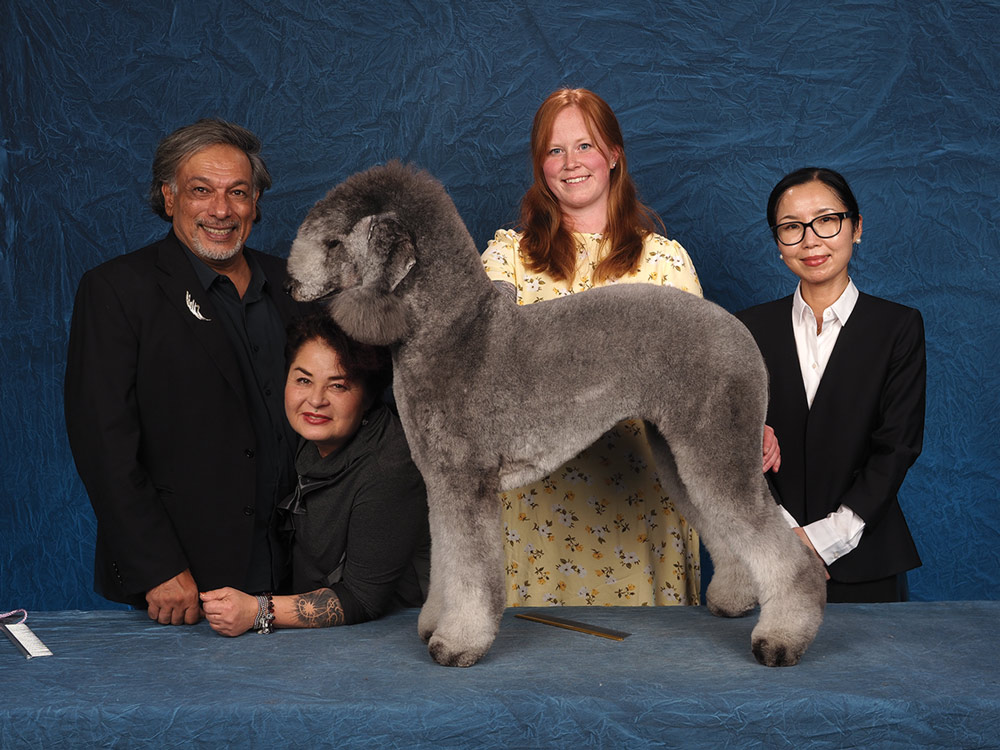
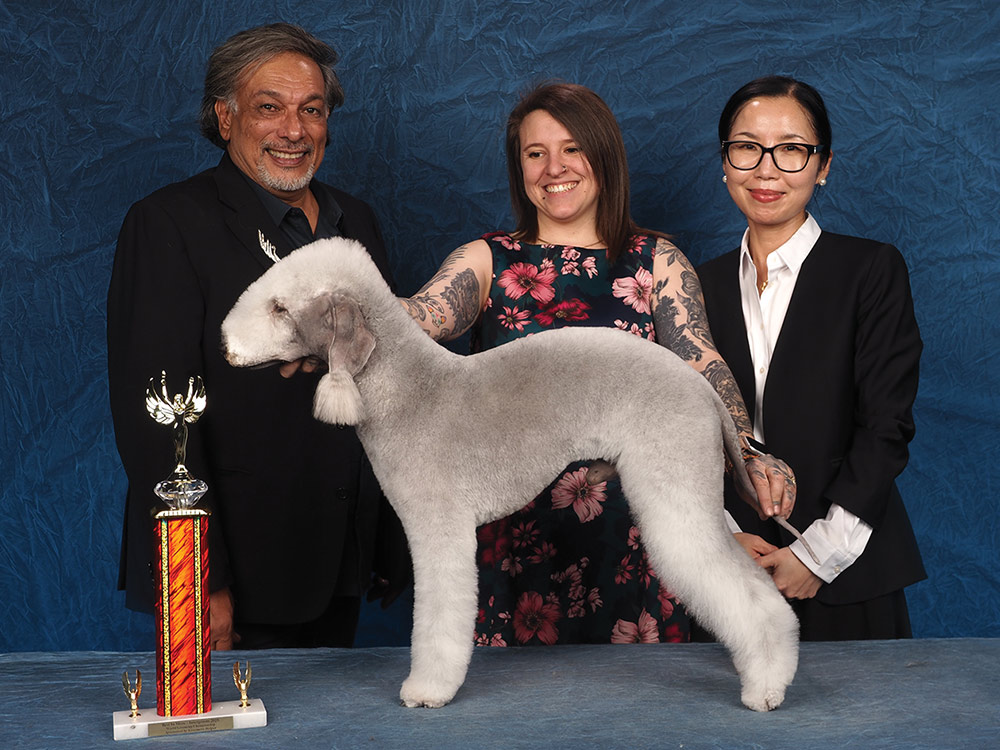
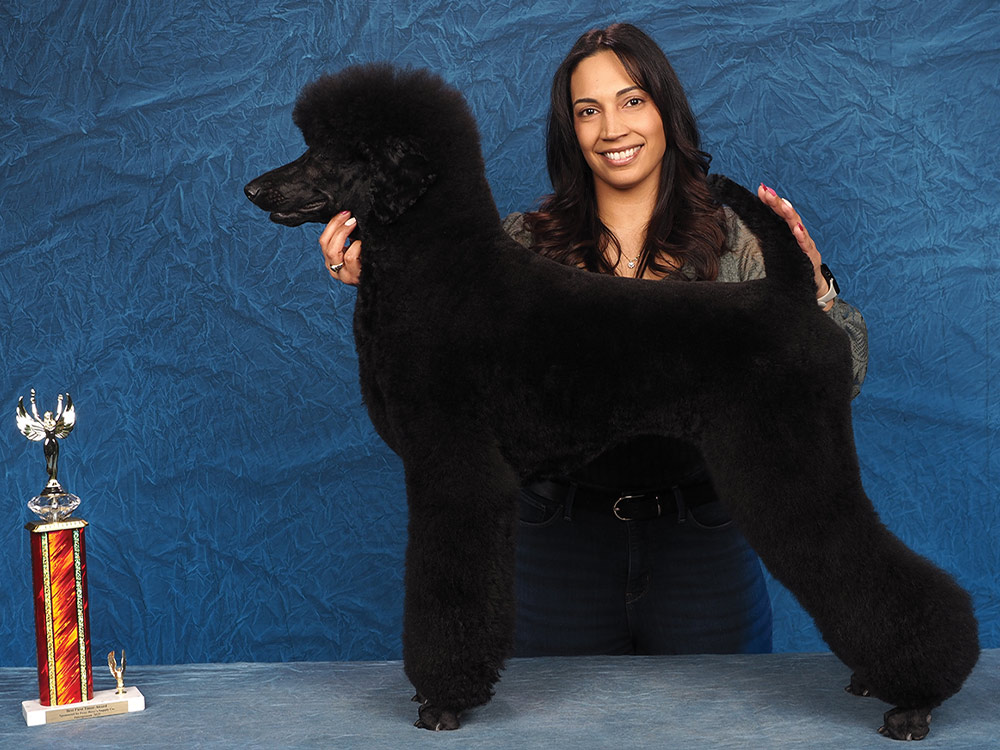
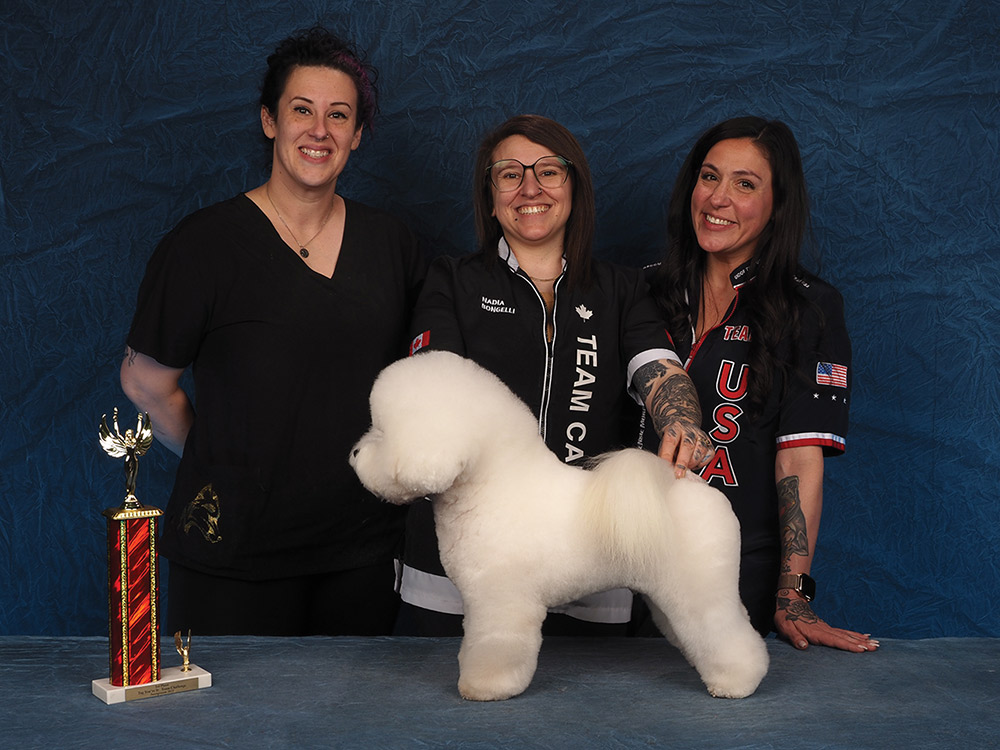
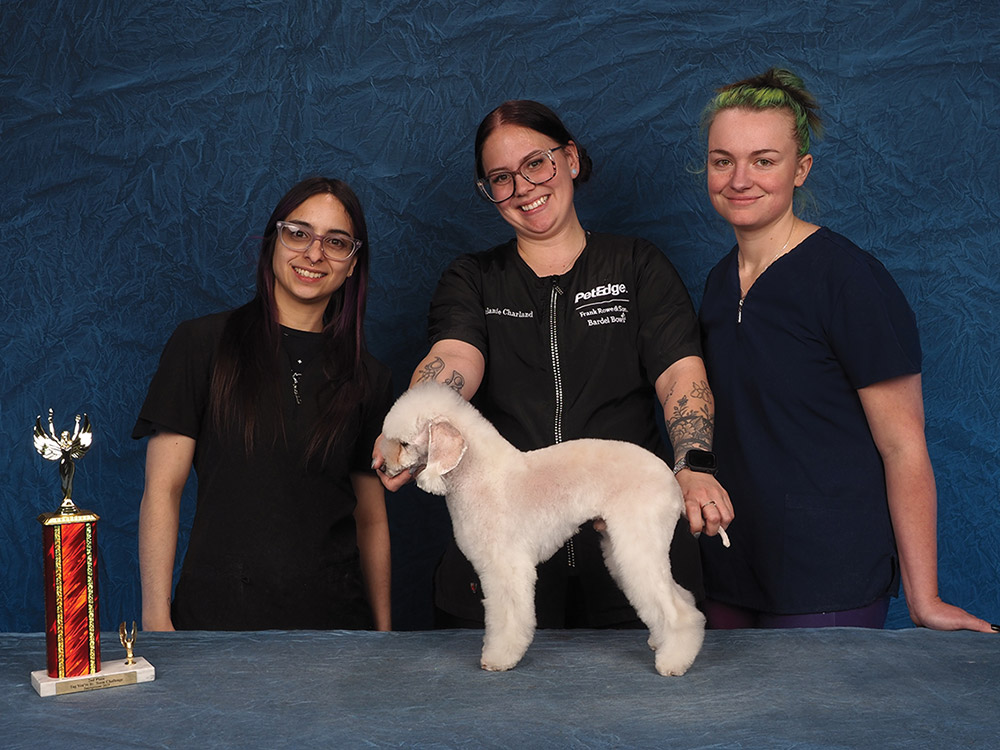

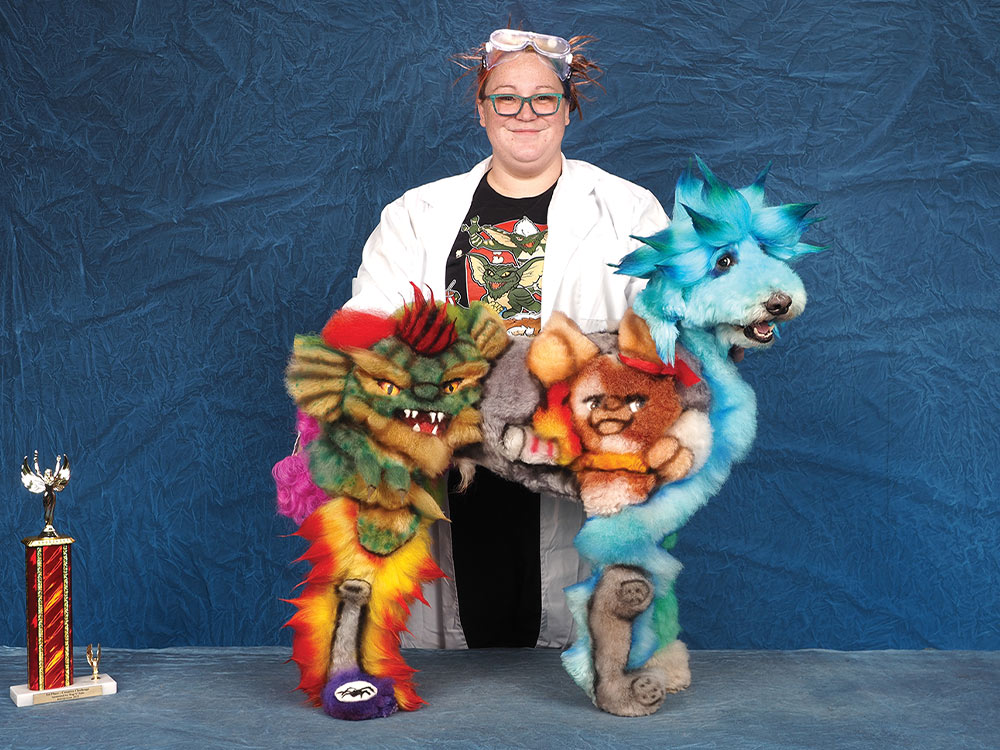
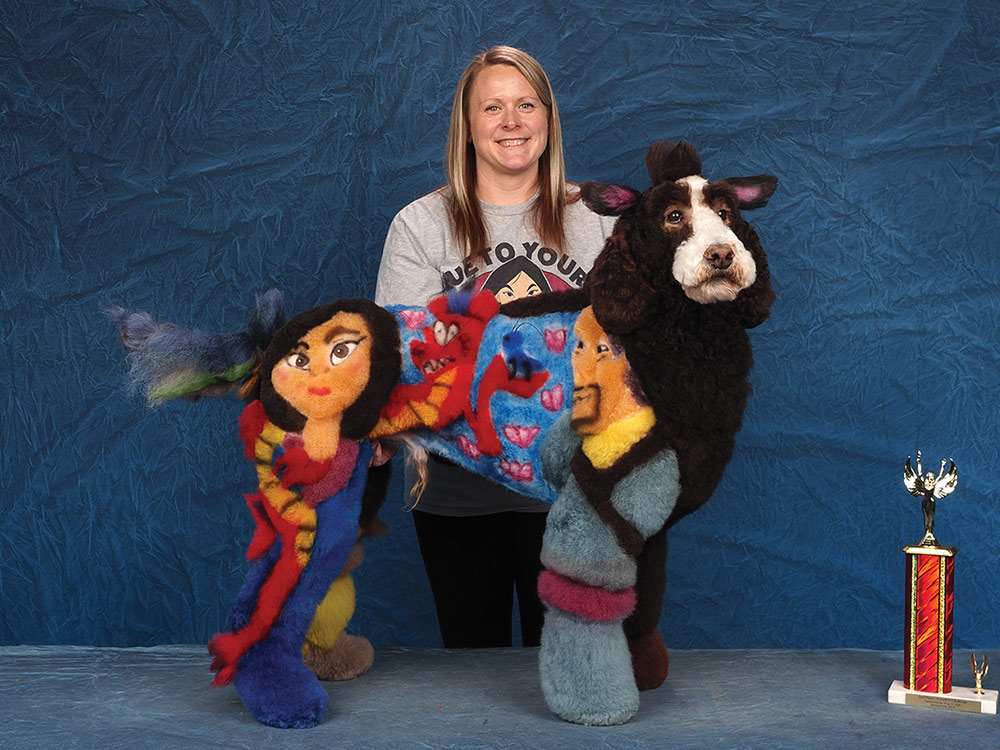

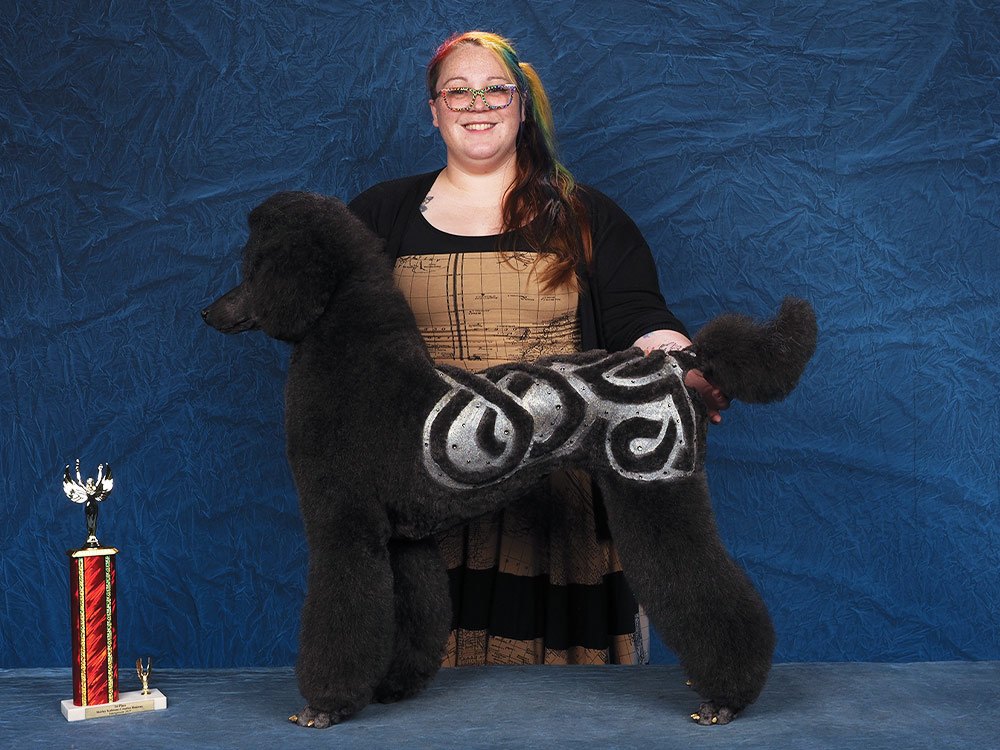

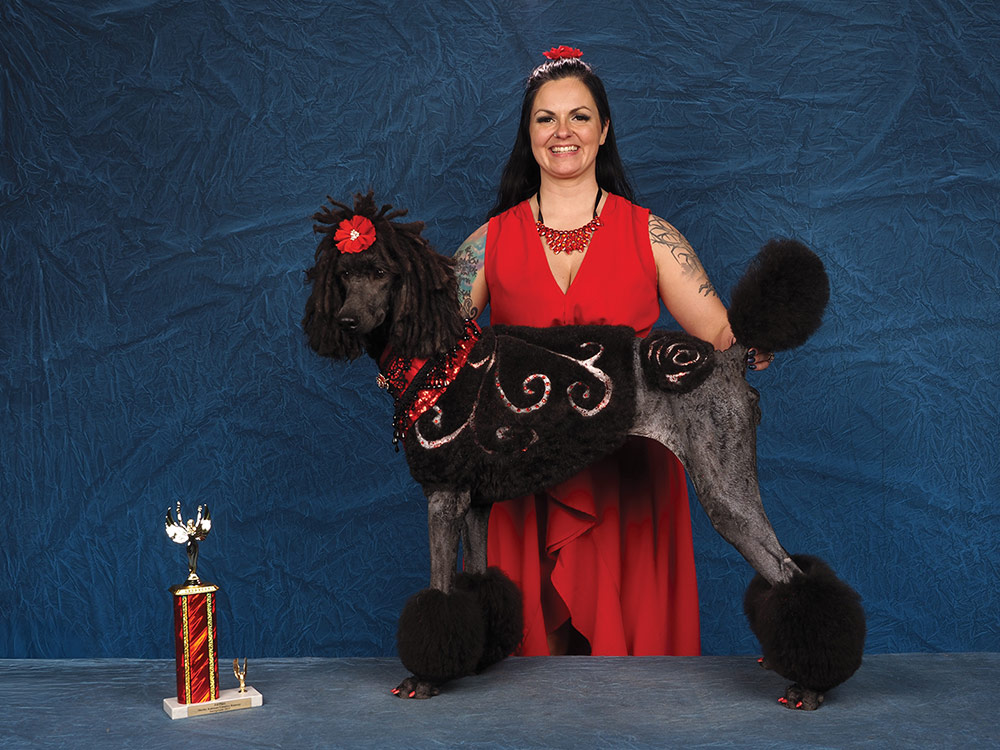
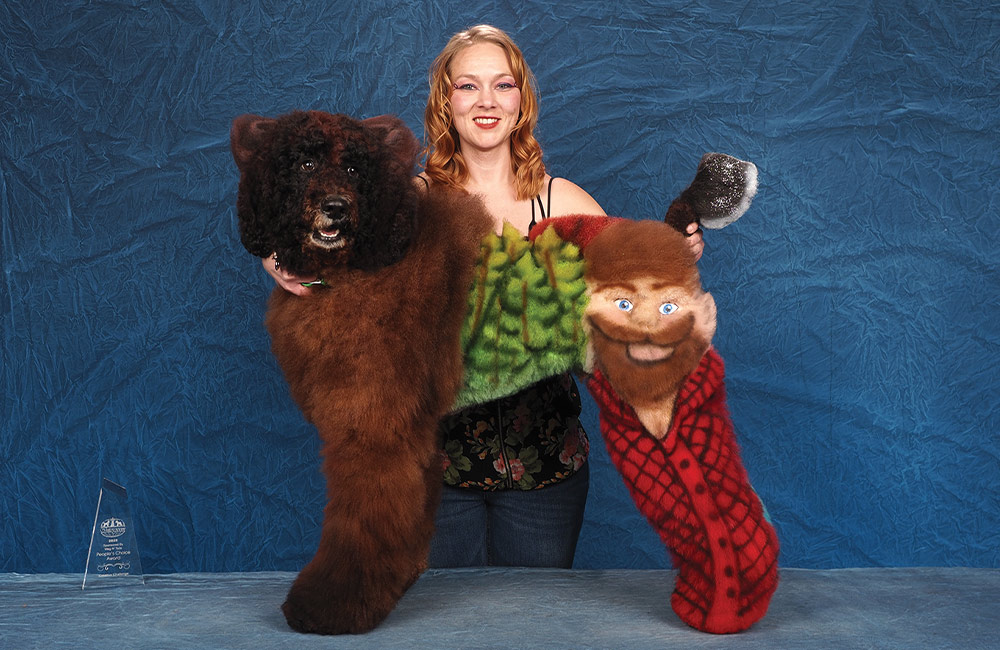
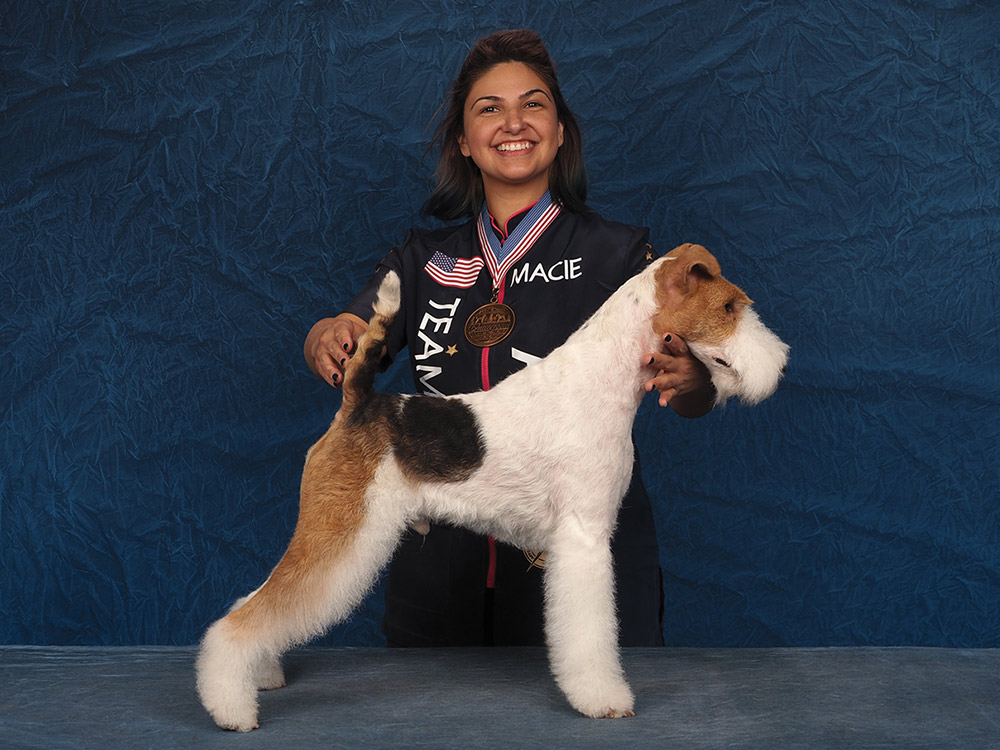

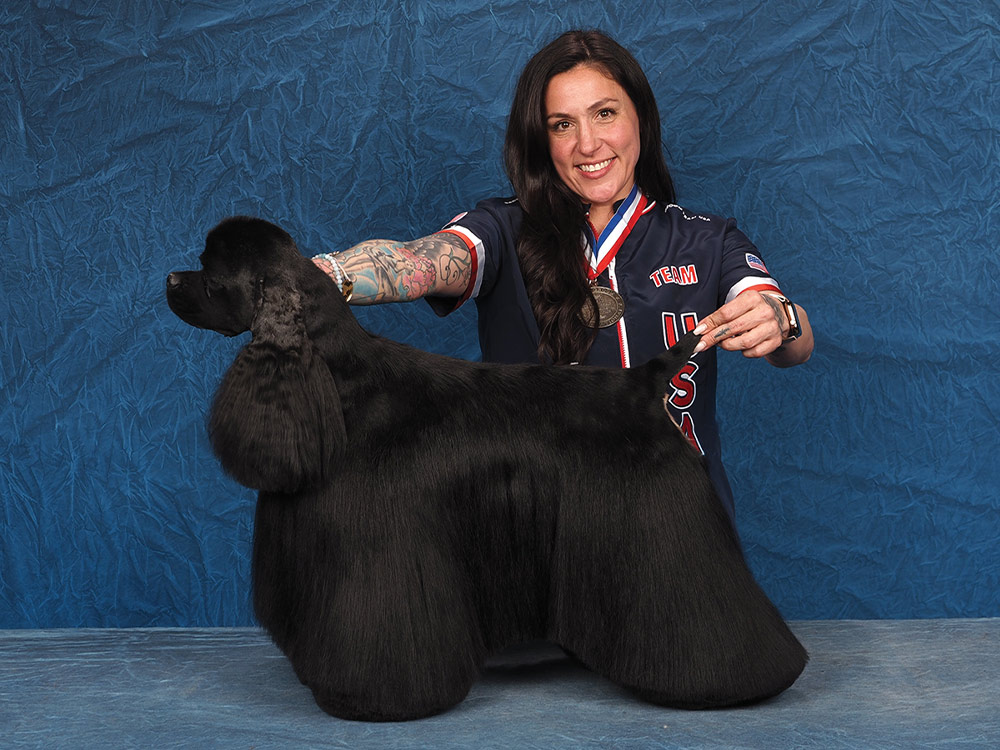
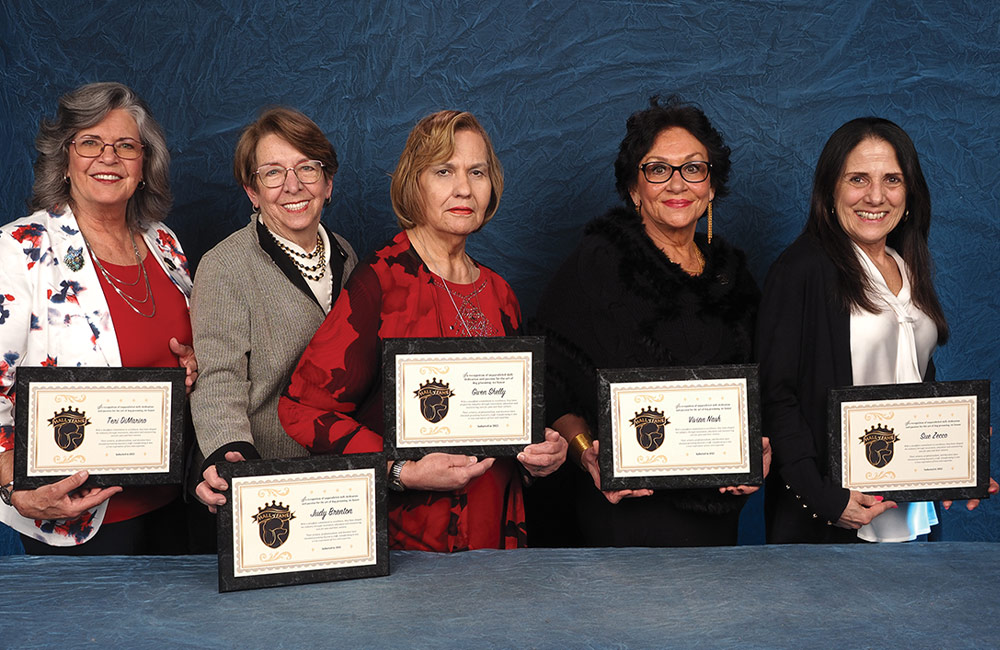



 ets can be considered the cornerstone of our profession. After all, what would our businesses be without them? As part of grooming holistically, the pets need balancing like any other part of your operation.
ets can be considered the cornerstone of our profession. After all, what would our businesses be without them? As part of grooming holistically, the pets need balancing like any other part of your operation.
When this layer is unbalanced, its impact often goes unnoticed until problems arise. Symptoms of imbalance include dissatisfied clients, burned-out groomers, toxic work environments, high employee turnover and uncooperative pets.
First let’s get consent grooming out of the way. This term is one of the many misinterpreted phrases that are the bane of our existence—along with “puppy cut” and “short but not shaved.” These undefined terms not only mean different things to different people based on their lived experiences, but definitive definitions have also been hard to get the grooming industry behind.
Instead, refer to these terms as what you want to accomplish, changing vague phrasing into clear communications. Consent becomes cooperation. Pets cooperating for grooming creates happier pets, clients, groomers and businesses. Safe and gentle handling is a learned skill.
When a pet checks in, it’s crucial to conduct a thorough assessment. This intake will help determine if you can safely groom this pet and when to stop. Observe the pet’s gait as they enter your business. Are their eyes clear and focused? Can you run a comb through their coat?
The most important part of the check-in process is twofold. First, pay attention to their body language. They know where it hurts, and there will be a behavioral cue when you approach a painful area. Pets in pain are a bite risk. Second, examine their gum color. If their gums are not a healthy pink, this pet is not healthy enough to groom. Check their gums throughout the groom, especially if it’s an older pet.
Skin and coat issues also require specialized skills, and we should all have a basic understanding of skin and coat science.
Skin and coat issues also require specialized skills, and we should all have a basic understanding of skin and coat science. Then there are unusual allergies. Some products that are normally safe for most pets may not be for a particular pet. This is why it’s important to know what is in the bottles of shampoo and conditioner you are using on the pets in your care.
Various intake forms provide the information we need to make safe decisions for the pets we groom. These are the questions included on my New Client Questionnaire, which is signed and dated by the client:
- Date of last grooming:
- Do you brush and comb your pet at home?
- Has your pet ever bitten anyone?
- If so, under what circumstances?
- Has your pet ever bitten a groomer?
- Has your pet ever tried to bite a groomer?
- What medications is your pet on?
- Acknowledge all first grooms are audio and video recorded.
This particular form tells me:
- How often this pet is groomed, and whether or not they are used to grooming.
- Whether the owner maintains this pet at home or uses cheap tools that hurt the pet. (This is a good opportunity to demonstrate proper technique and the importance of quality tools.)
- How much of a bite risk this pet is.
- If there extenuating circumstances, such as a child waking a sleeping pet.
- You might be surprised to find out how many owners think it’s part of our job description to get bit and answer “no” to question #3.
- Just because the pet’s teeth didn’t connect with a groomer doesn’t mean they won’t the next time they try to bite.
- What medical concerns I need to know before accepting this pet for grooming.
- If the pet owner knows you are recording all interactions, they are less likely to play games.



 n the fast-paced world of dog grooming, salon owners and groomers alike know the importance of having a cohesive, well-rounded team. It’s often said, “You are only as strong as your weakest link,” and this holds true in any grooming salon.
n the fast-paced world of dog grooming, salon owners and groomers alike know the importance of having a cohesive, well-rounded team. It’s often said, “You are only as strong as your weakest link,” and this holds true in any grooming salon.
Each team member brings their own strengths to the table—whether it’s excellent customer service, precise grooming skills or exceptional organizational abilities. But imagine the benefits if every team member could step outside their comfort zone and learn new skills. This is where cross-training can make all the difference.
Cross-training refers to teaching employees to perform multiple roles within the salon, such as receptionist duties, bathing, customer service, or even basic grooming tasks. It’s not just about filling in for absent team members—it’s about creating a more flexible, empathetic and engaged team.
Here are five key benefits to cross-training your staff:
1. Improves Team Morale
2. Prevents Burnout and Enhances Job Satisfaction
A 2022 survey by LinkedIn found that 44% of employees in service-based industries felt more engaged when they had the opportunity to learn new skills,1 making cross-training an effective tool for maintaining long-term employee satisfaction.
By having everyone try different roles, staff can develop empathy for their teammates.

3. Increases Flexibility and Reduces Stress During Absences
Cross-training fosters a greater understanding of each other’s responsibilities. Groomers, for instance, might not always realize the physical and emotional effort required for bathing dogs, while a bather may not understand the precision needed for detailed grooming. By having everyone try different roles, staff can develop empathy for their teammates. This helps reduce tension and encourages mutual respect within the salon, creating a more harmonious workplace.
According to a report by LinkedIn, 94% of employees said they would stay longer at a company that invests in their learning.2 Whether through online courses, seminars or in-house training, investing in cross-training benefits both your team and your salon’s success in the long run.
- Receptionist Duties: Answering phones, booking appointments and handling customer check-ins.
- Bather: Bathing, brushing and preparing dogs for grooming.
- Basic Grooming: Tasks like nail trimming, sanitary grooming and paw pad care.
- Cleaning Chores: Maintaining a clean and organized work environment.
- Customer Service: Greeting clients, handling concerns and providing excellent service.
- Cashier: Checking out clients, processing payments and handling financial transactions.
Cross-training isn’t an overnight project, but the long-term benefits far outweigh the initial time and resource investment. By starting small—perhaps with one role at a time—you can gradually build a team that’s more versatile, engaged and empathetic.
As the saying goes, “Teamwork makes the dream work.” When everyone is trained to perform multiple roles, you build a stronger, more resilient team that can handle whatever challenges come its way.
So, the next time an unexpected situation arises, you’ll be grateful for the time you spent cross-training your team. Not only will it improve your salon’s efficiency, but it will also create a happier, more productive environment for everyone involved.
- LinkedIn 2022 Workplace Learning Report. https://learning.linkedin.com/resources/workplace-learning-report-2022
- LinkedIn 2018 Workplace Learning Report. https://learning.linkedin.com/resources/workplace-learning-report-2018
Kim Kier is the owner/groomer of Little Barks Grooming & Boutique, an award-winning luxury salon in Columbia, South Carolina. She is also a Master Pet Aesthetician, Professional Grooming Credential (World Pet Association), Master Groomer Behavior Specialist, Fear Free Professional, Low Stress Handling Level Silver Certified, and Certified Puppy Consultant.



by Daryl Conner
 few weeks ago, a customer exited our grooming studio with her dog, and then came right back in saying, “There is a woman lying in your driveway.” To my horror, one of my regular customers was, in fact, flat on her back and unable to get up. This customer, who is in her eighties, had been pulled down by her boisterous dog, and ended up with a contusion on her head and a broken clavicle.
few weeks ago, a customer exited our grooming studio with her dog, and then came right back in saying, “There is a woman lying in your driveway.” To my horror, one of my regular customers was, in fact, flat on her back and unable to get up. This customer, who is in her eighties, had been pulled down by her boisterous dog, and ended up with a contusion on her head and a broken clavicle.
When it comes to safety, slipping and tripping hazards are high on the list of ways both humans and animals can be injured. According to the National Safety Council, 36% of emergency room visits in the United States are the result of falls.1 And statistically, pets are involved in causing over 86,000 non-fatal falls per year.2
- Are pavement and walkways smooth or are there holes, cracks or raised areas that might cause someone to fall?
- If you have a space for dogs to walk and eliminate, is it well-lit and free of things someone could fall over?
- Are stairs or ramps in good condition? Are there rotting or damaged boards that could cause someone to trip? Are they slippery? If so, can you apply adhesive grip strips?
- Are any railings in good repair? Are they obstructed by plants or decorative items making them unusable?
- Is there adequate lighting for people to navigate by in all of your outdoor spaces?
- Do all of your flooring, carpet and rugs lay flat, or are there edges curled or raised that could cause a tripping hazard?
- If you are located in an area that gets cold, do you have protocols in place for dealing with ice?
- If the area gets wet from people coming and going with damp shoes, does the floor get slick?
- Are there any electrical cords or vacuum hoses that could be tripped over?
- How about point of sale items, plants or even dog toys? The entryway should always be free of anything that someone might step on or trip over.
- Inappropriate footwear, such as flip flops or sandals with slick soles or open toes, are not safe in the grooming environment.
- Pets on the floor, whether customer dogs or staff pets that come to work, can be underfoot and problematic.
- Leashes used when transporting pets from one area to another are potential sources of tripping, especially the retractable models.
- Shop vacuums with long, flexible hoses seem to be exceptionally good at wrapping around ankles if they are not properly secured.
The animals in our care are also susceptible to fall injuries. This is especially true with elderly dogs who may have limited mobility and potentially also have vision problems. For these pets, navigating in the unfamiliar area of the grooming environment can be filled with danger. Additionally, if there are ramps or stairs that they need to contend with, the chance of injury is increased. Combine all of this with smooth floors and wet areas and you can see the potential for a problem.
Dogs can fall from grooming tables or tubs if not constantly and consistently monitored. They can also be injured if they anticipate our movements as we are putting them down on the floor or into a cage. Often the dog will unexpectedly leap in the direction we are trying to place them, and land badly. For this reason, it is imperative that groomers keep dogs in firm control as they are moving them from one place to another.
Grooming tables and tubs should have secure, non-slip footing to help keep pets safe while they are being worked on. Cages, too, need something that provides texture for the pet to stand on so their legs don’t splay out from under them.
If a person or pet falls on your property, first check on their wellbeing, and then seek medical attention if necessary. You should also take a moment to write down what happened and when. This will help you remember the incident more clearly later if needed.
Slips, trips and falls can happen anywhere, but the grooming environment offers extra opportunities for accidents because we have pets, water and cords all lying in wait for an accident. Being aware of potential hazards can help us make plans to keep our space as safe as possible.
- National Safety Council. Top 10 Preventable Injuries. https://injuryfacts.nsc.org/all-injuries/deaths-by-demographics/top-10-preventable-injuries/
- Stevens JA, Teh SL, Haileyesus T. Dogs and cats as environmental fall hazards. J Safety Res. 2010 Feb;41(1):69-73. doi: 10.1016/j.jsr.2010.01.001. Epub 2010 Jan 28. PMID: 20226954. https://pubmed.ncbi.nlm.nih.gov/20226954/
- Berman & Simmons. Navigating Slip and Fall Claims: How Experienced Attorneys Prove Negligence and Secure Justice. https://www.bermansimmons.com/practice-areas/slip-fall-unsafe-properties/slip-and-fall-liability/

by Jennifer Bishop Jenkins
 here are two kinds of people in the world: those of us who are old enough to remember life before the internet and the rest of us who have never known life without it. Technology has revolutionized how we communicate with each other, and with it has come the constant but impersonal connectivity of social media.
here are two kinds of people in the world: those of us who are old enough to remember life before the internet and the rest of us who have never known life without it. Technology has revolutionized how we communicate with each other, and with it has come the constant but impersonal connectivity of social media.
The differences in how we orient our interpersonal communications between the older and the younger generations are real. The older among us went to libraries to look up information and had to call someone on the phone if we wanted to talk. But, most importantly, we first learned how to communicate in face-to-face interactions. Younger generations grew up with automated tools that ease communication, but in a less personal way.
We all live in a world—including our pet grooming world—where, in just the last three decades, communication between people has grown incredibly. But that communication has also become mostly electronic and impersonal, and that has consequences…
A Chinese study published in Frontiers in Psychology looked at the effect of social media on people’s emotions, mental health, stress and anxiety levels, self-image and depression. They concluded that social media does indeed increase stress, depression and anxiety, and even a sense of isolation.1
The United States Centers for Disease Control published a study on social media and bullying victimization, finding persistent feelings of sadness or hopelessness, and even suicide risk, especially among adolescents.2
This is the dark side of our changing communication, and it is well-known. It should hopefully make every user of social media feel some personal obligation to work to prevent these effects in any way possible.
So, how do we best use social media to build better relationships with our current and potential clients, and within our grooming community?






Always post with integrity and propriety, writing more thoughtful, helpful and mature posts. Good manners online matter. Finally, implement all these same principles not just on social media, but in all your relationships and communications.
References:
- Chen M, Xiao X. (2022, Sept 15). The effect of social media on the development of students’ affective variables. Front Psychol. https://pmc.ncbi.nlm.nih.gov/articles/PMC9521624
- Young E, McCain JL, Mercado MC, et al. (2024, Oct 10). Frequent Social Media Use and Experiences with Bullying Victimization, Persistent Feelings of Sadness or Hopelessness, and Suicide Risk Among High School Students—Youth Risk Behavior Survey, United States, 2023. https://www.cdc.gov/mmwr/volumes/73/su/su7304a3.htm


 n the grooming salon, not every cat that walks through the door is in perfect health. As professional cat groomers, we often work with feline clients who are managing chronic illnesses like diabetes, hyperthyroidism, kidney disease, arthritis or a heart condition. These cats still need regular grooming, but they may require a modified approach to ensure safety, comfort and a low-stress experience.
n the grooming salon, not every cat that walks through the door is in perfect health. As professional cat groomers, we often work with feline clients who are managing chronic illnesses like diabetes, hyperthyroidism, kidney disease, arthritis or a heart condition. These cats still need regular grooming, but they may require a modified approach to ensure safety, comfort and a low-stress experience.Most diabetic cats will be on insulin, so be sure to schedule around their insulin doses when possible. In addition, you should watch for signs of low blood sugar, which include trembling, confusion and lethargy. Stop the groom immediately if any of these occur.
The following tips apply to cats with any of the abovementioned chronic illnesses or other health conditions:
- Pre-Groom Communication: Always ask owners about health conditions, medications and any past reactions to grooming.
- Keep It Calm: A calm, confident demeanor is essential, as is low-volume dryers and avoiding overwhelming scents or stimulation.
- Avoid Over-Handling: Plan the groom in steps to minimize how much the cat is moved, lifted or restrained.
- Groom with Efficiency: Prioritize what’s necessary. Sometimes that means skipping the perfect fluff-dry or final touch-up for the cat’s safety.
- Know When to Say No: If a cat is too fragile or unwell for grooming, it’s okay to refer back to the veterinarian for sedation-based grooming options.
Grooming cats with chronic illnesses requires a shift in mindset: it’s not about perfection, it’s about compassion. Our role is to provide comfort, hygiene and relief in a way that respects the cat’s physical limitations. When we understand their needs and work with empathy, we become more than groomers—we become part of their care team. And that’s something to be proud of.


by Misty Gieczys
 orgis—the pint-sized pooches with hearts as big as their personalities—have captured the adoration of dog lovers worldwide. And let’s be honest, who can resist that adorable, wiggling rear end as these dwarf dogs strut their stuff?
orgis—the pint-sized pooches with hearts as big as their personalities—have captured the adoration of dog lovers worldwide. And let’s be honest, who can resist that adorable, wiggling rear end as these dwarf dogs strut their stuff?
But how do you keep this iconic dog, and that even more iconic “bubble butt,” looking their best? The following will outline how to groom your Corgi clients quickly and easily.

You’ll know they’re properly prepped when you can easily run a wide-set comb (like a poodle comb) through their entire coat. A fully dried and combed-out coat is the perfect canvas for the next stage of grooming.

Fig. 2) Tidying up a Corgi’s paws involves carefully shaving the hair that grows between and around their paw pads. Using clippers with a #10 to #40 blade, gently remove this excess hair to provide better traction and maintain cleanliness.
Following this, you’ll move on to shaping the foot into a desirable “cat foot”—a look characterized by its high arches and tight, compact form. To achieve this, take your scissors (straight, curved or even bulking thinners) and position them perpendicular to the nails. Carefully trim the hair all the way around the foot, maintaining this perpendicular angle. Then take your slicker brush and brush the hair upwards around the foot.
Now, using your shears, angle them slightly into the foot as you trim around it again. The slight inward angle is what helps to establish that desired arch. After this, you’ll brush the hair upwards again with your slicker brush.
For the final touch, create a slightly steeper arch at the very top of the foot. Each time before making this final angled cut, set the foot down briefly to ensure you’re not accidentally removing the established high arch.

Remember, the furnishings on the back of the front leg need to hang over the wrist pad on a long-haired Corgi; do not trim those off. On a short-haired Corgi, they would be blended into the wrist pad.

Remember, the furnishings on the back of the front leg need to hang over the wrist pad on a long-haired Corgi; do not trim those off. On a short-haired Corgi, they would be blended into the wrist pad.
Fig. 4) Moving to the back legs, remove the hair on the back of the hock. There should be no free-flowing hair extending off the back of the hock; the goal is a tight, well-defined look that continues down to create a compact foot.


To safely trim this area, gently push all the hair located above the rectum upwards and out of the way. This will give you a clear and unobstructed view of the rectum so you can trim the hair closely and safely.

Starting directly at the rectum, run the clippers straight down and under. Repeat this process on both sides of the rectum until you achieve the desired defined trail.



To further soften and refine the bubble butt contour, use your finishing blenders to carefully work around the boxed area to eliminate any harsh lines and enhance the roundness you started creating with the curved shears.
Visualize a chicken drumstick as your guide: the shape should transition smoothly from the top of the rear downwards, tapering gently towards the top of the hocks.

Finally, use your finishing blenders to soften the edges of this newly shaped “tail,” ensuring it blends naturally with the rest of the rear. Remember to keep the hair underneath this faux tail relatively short for sanitary purposes.

Starting from the rear of the dog, trim off any hair that touches the ground. The underline should be a straight line from the back legs forward. You can use either straight or curved shears to remove the excess hair and establish this cleaner, more defined underline.

Starting from the rear of the dog, trim off any hair that touches the ground. The underline should be a straight line from the back legs forward. You can use either straight or curved shears to remove the excess hair and establish this cleaner, more defined underline.
Fig. 11) Remember that dogs have a three-dimensional shape, so you want to avoid a blunt, straight cut along the underline. To create a more natural and visually appealing flow, take your blending shears (either finishing blenders or chunkers) and angle them downwards as you trim the belly hair.


Fig. 12) When viewing the dog from the front, the front leg furnishings should not be visible. Any hair that extends outwards to the side of the leg needs to be trimmed neatly. The furnishings should appear to be behind the front leg, not adding width to its profile.
Remove all excess hair from the front and sides of the leg so that it does not touch the ground. Finally, blend the back edge of the front furnishings smoothly into the longer hair that overhangs the wrist pad, ensuring a cohesive and clean look.

Make sure to then use your finishing shears to round out and soften the chest line, creating a smooth transition downwards to the point you’ve just established.
If your Corgi has any wispy hairs on their ears, blend those gently into the lines you’ve created around the head and chest, ensuring a cohesive and tidy appearance.
Throughout the groom, step back frequently to assess the overall balance of your trim, ensuring nothing sticks out or disrupts the smooth flow of the silhouette.
Congratulations, you have now created a cute, iconic Corgi groom!






Thanks for reading our July 2025 issue!

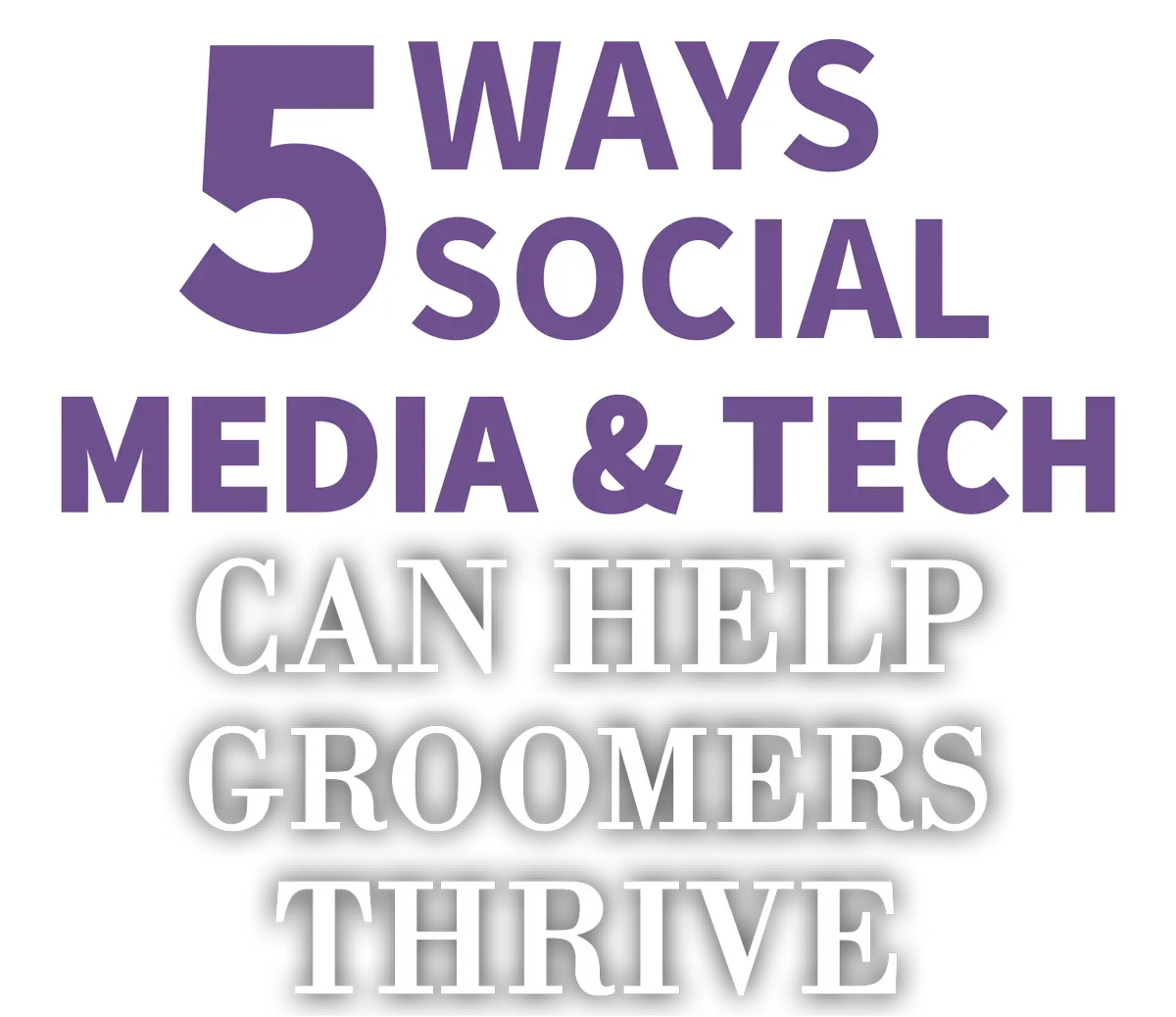
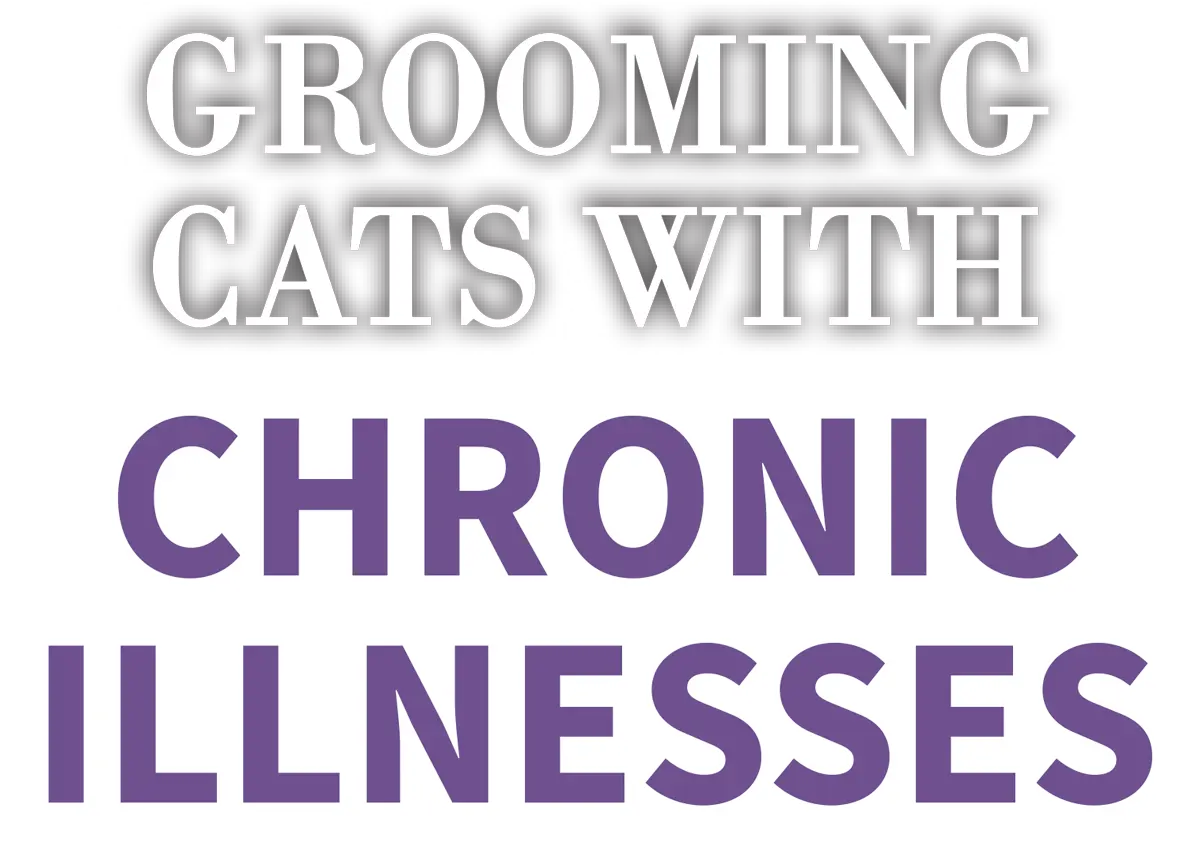
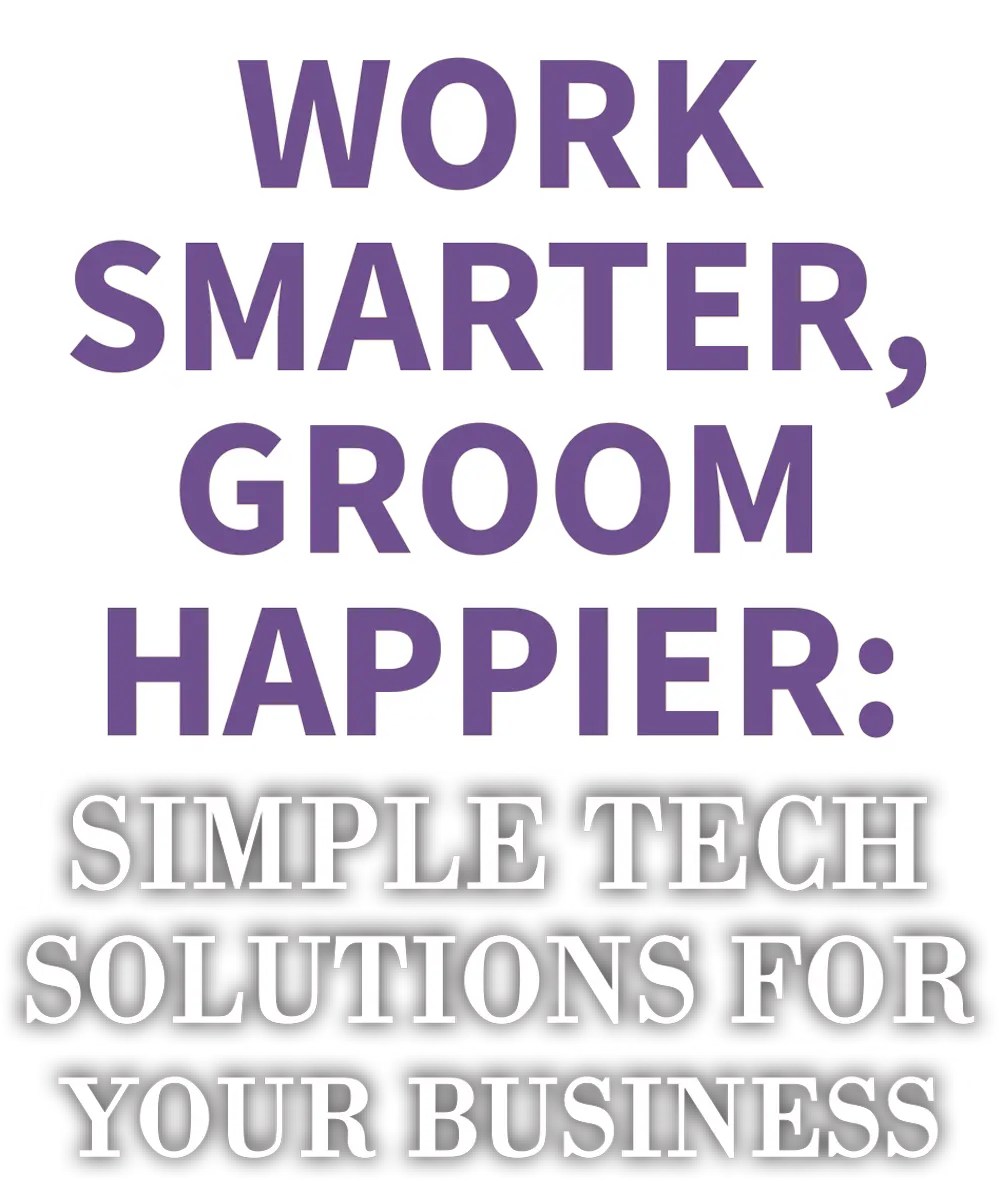
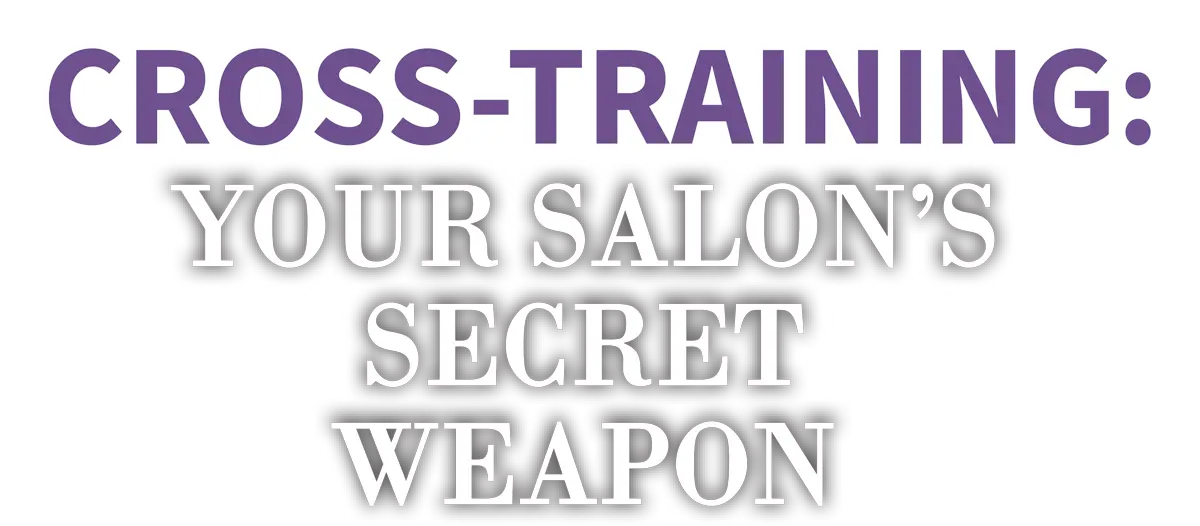
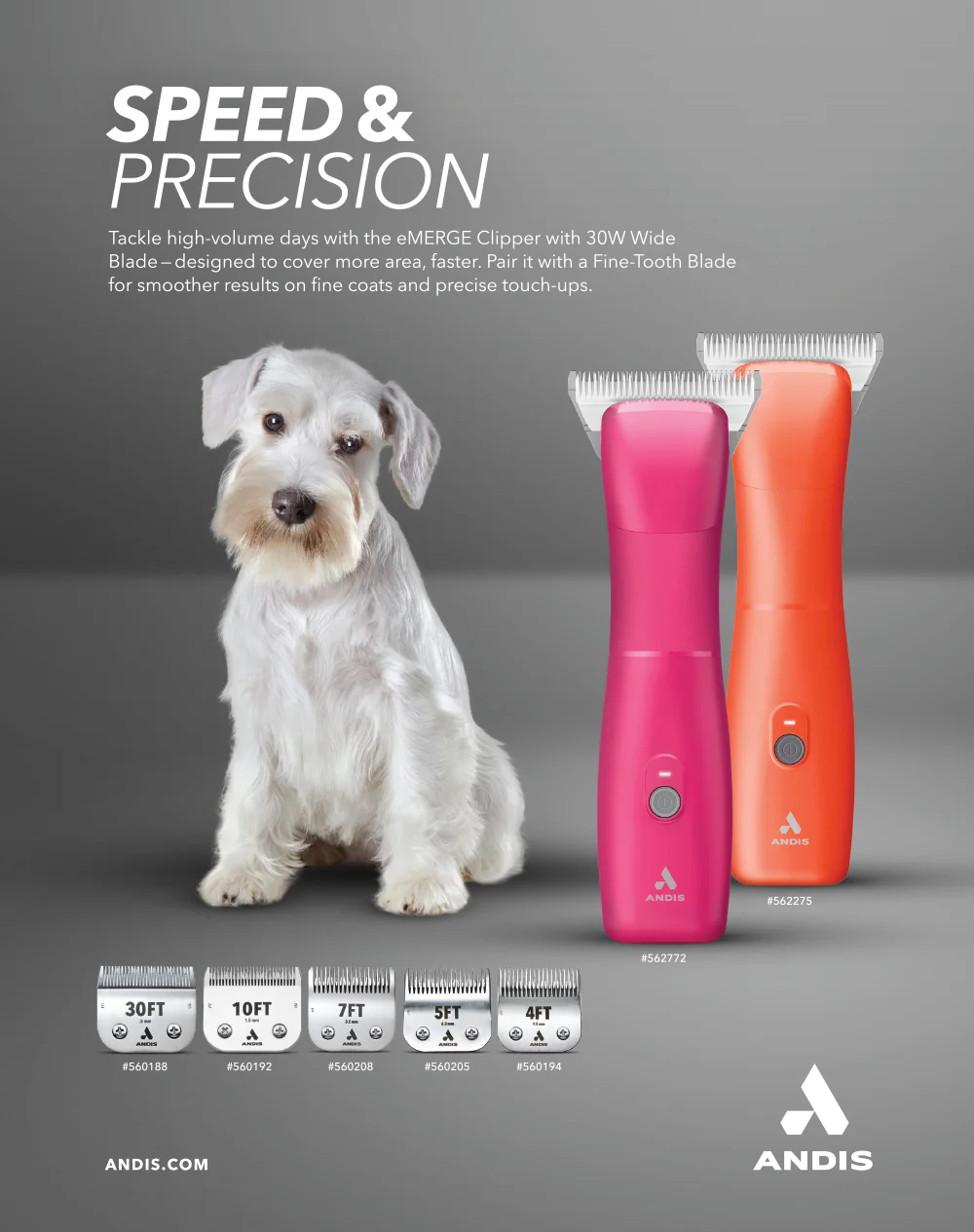
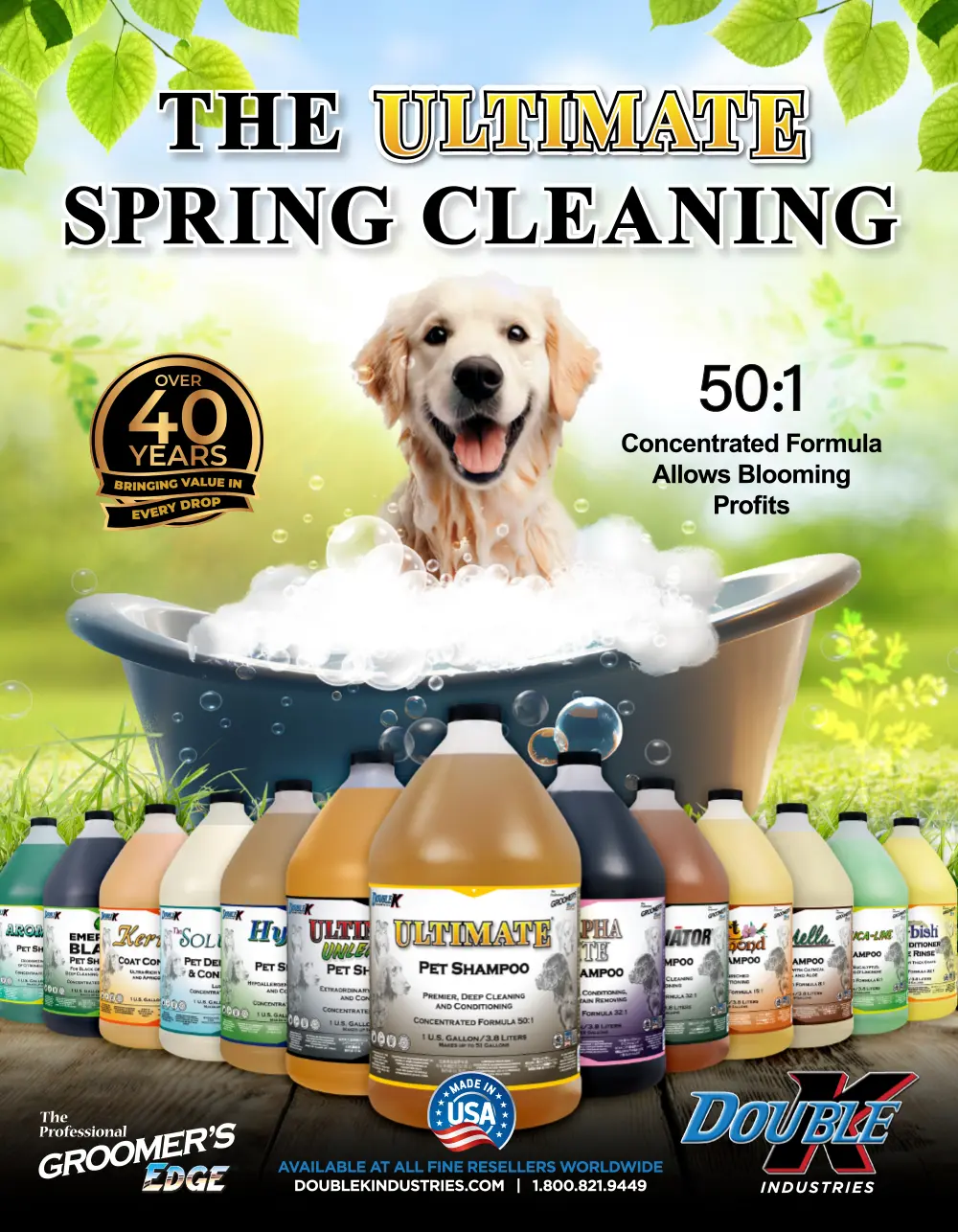

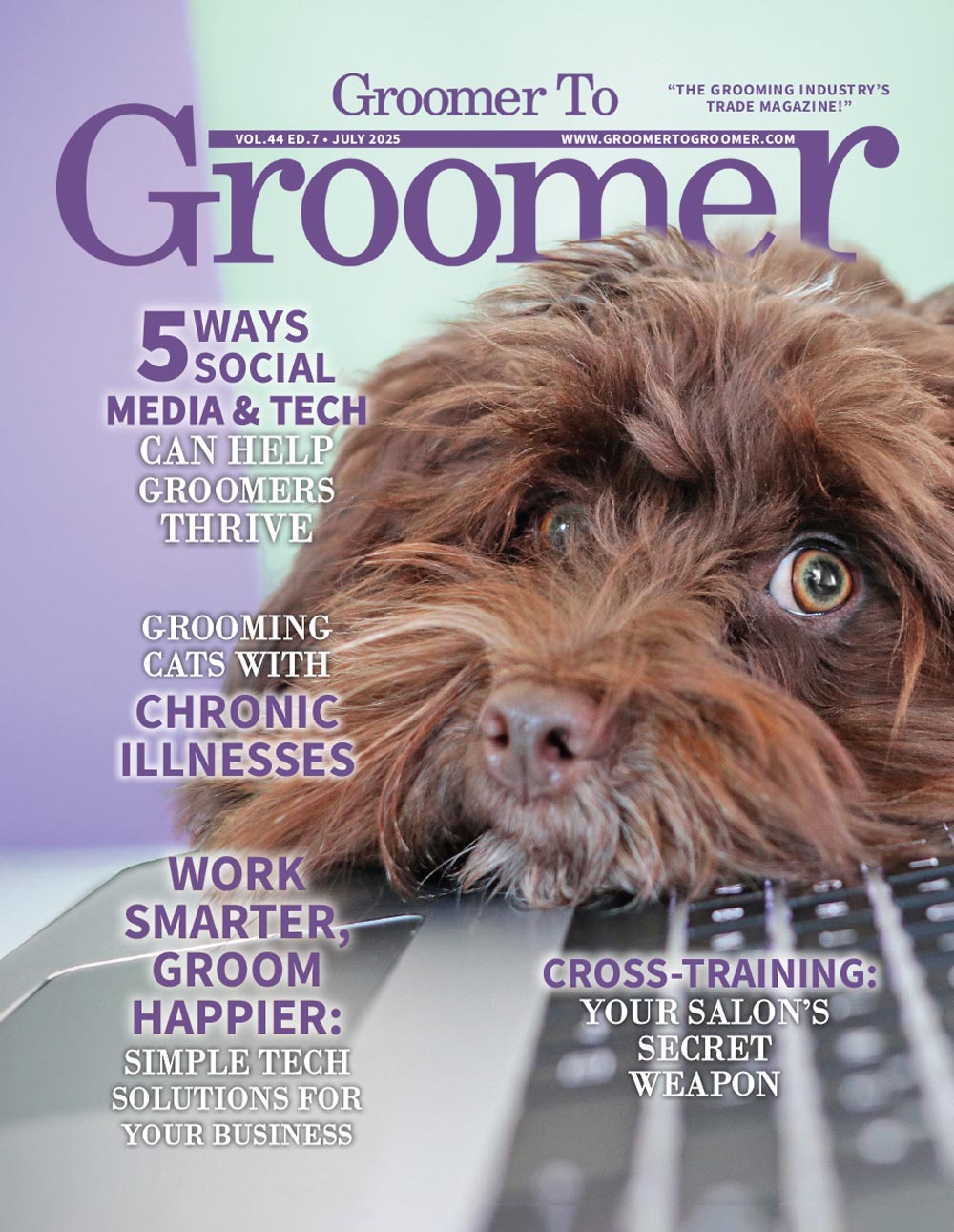
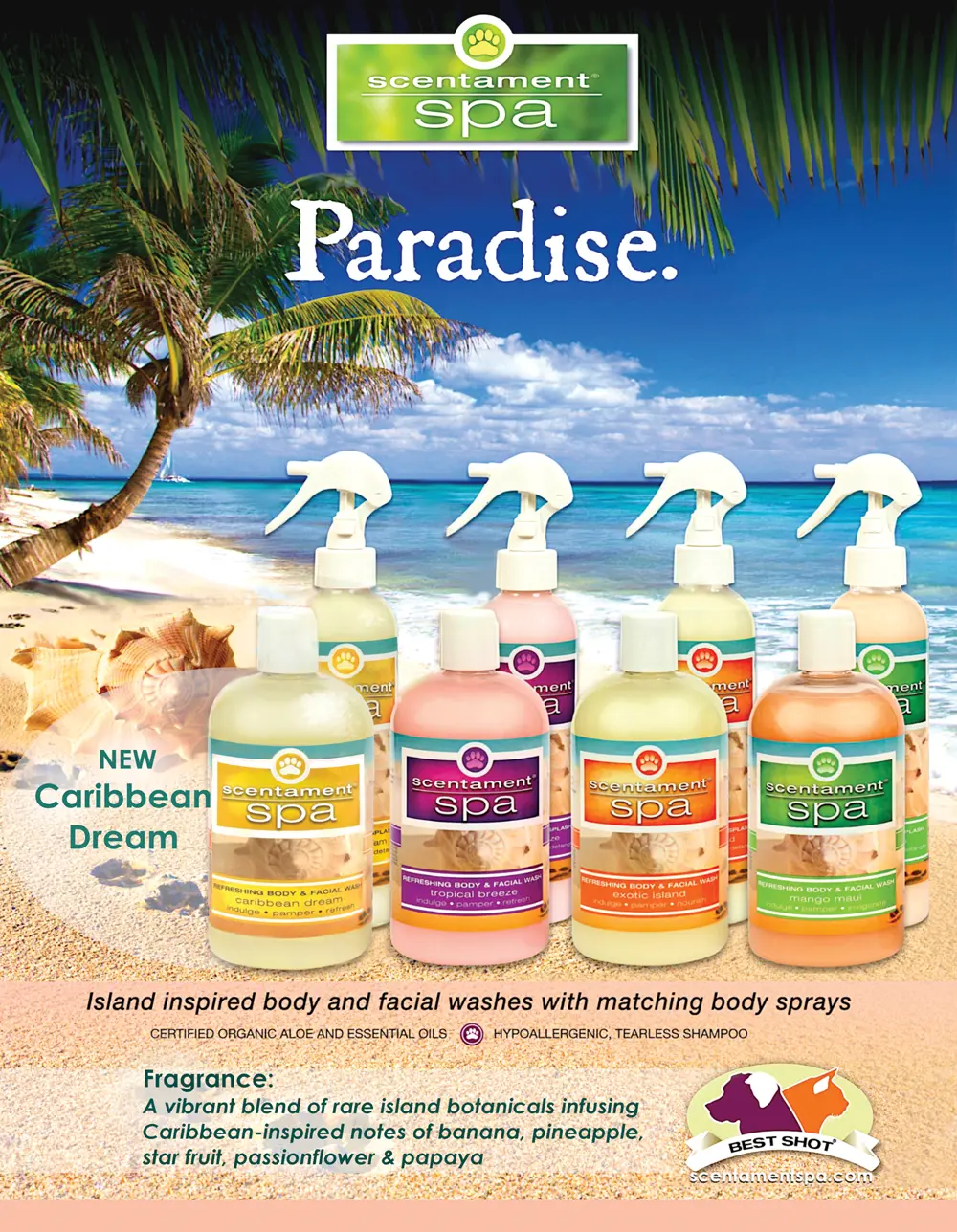
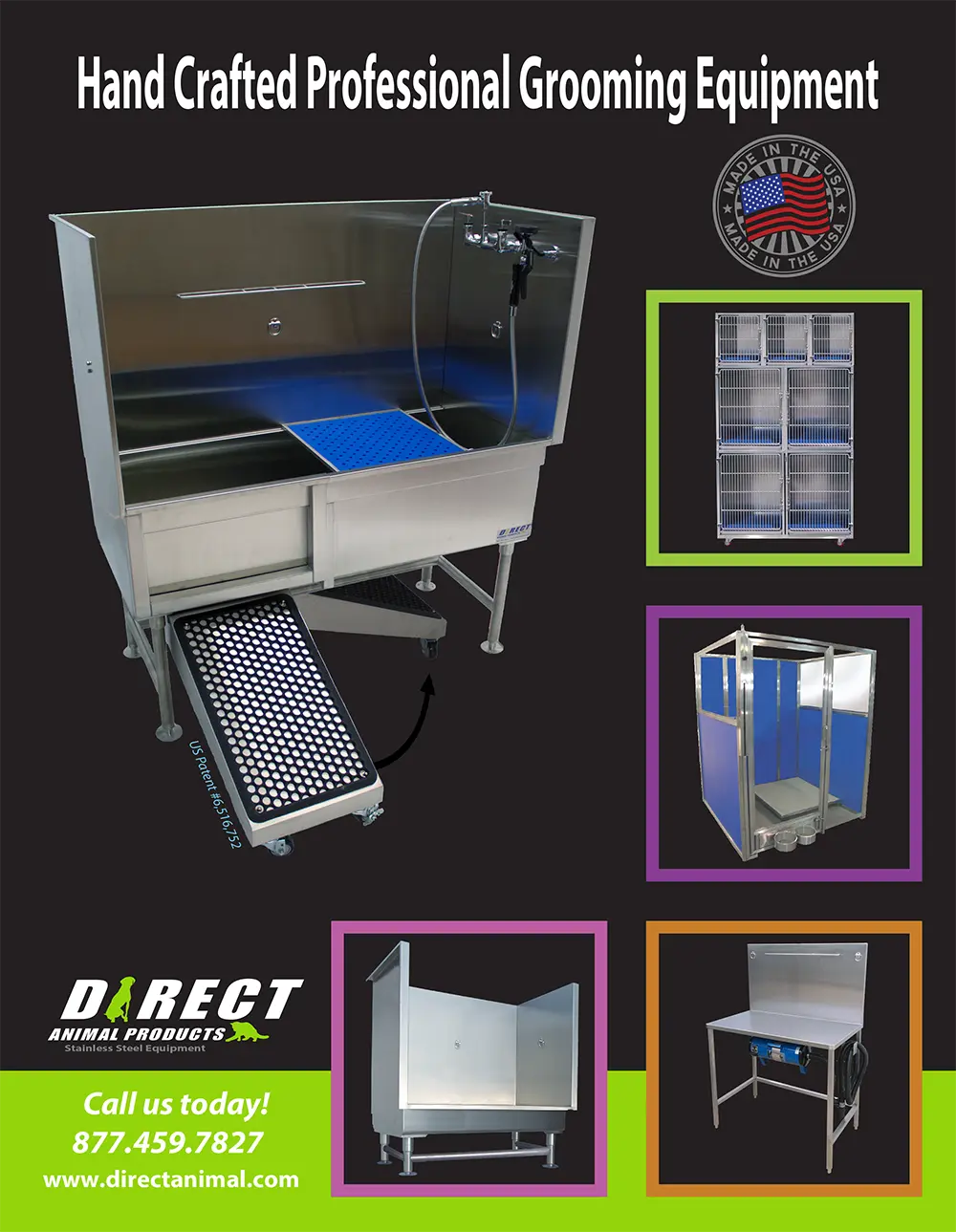
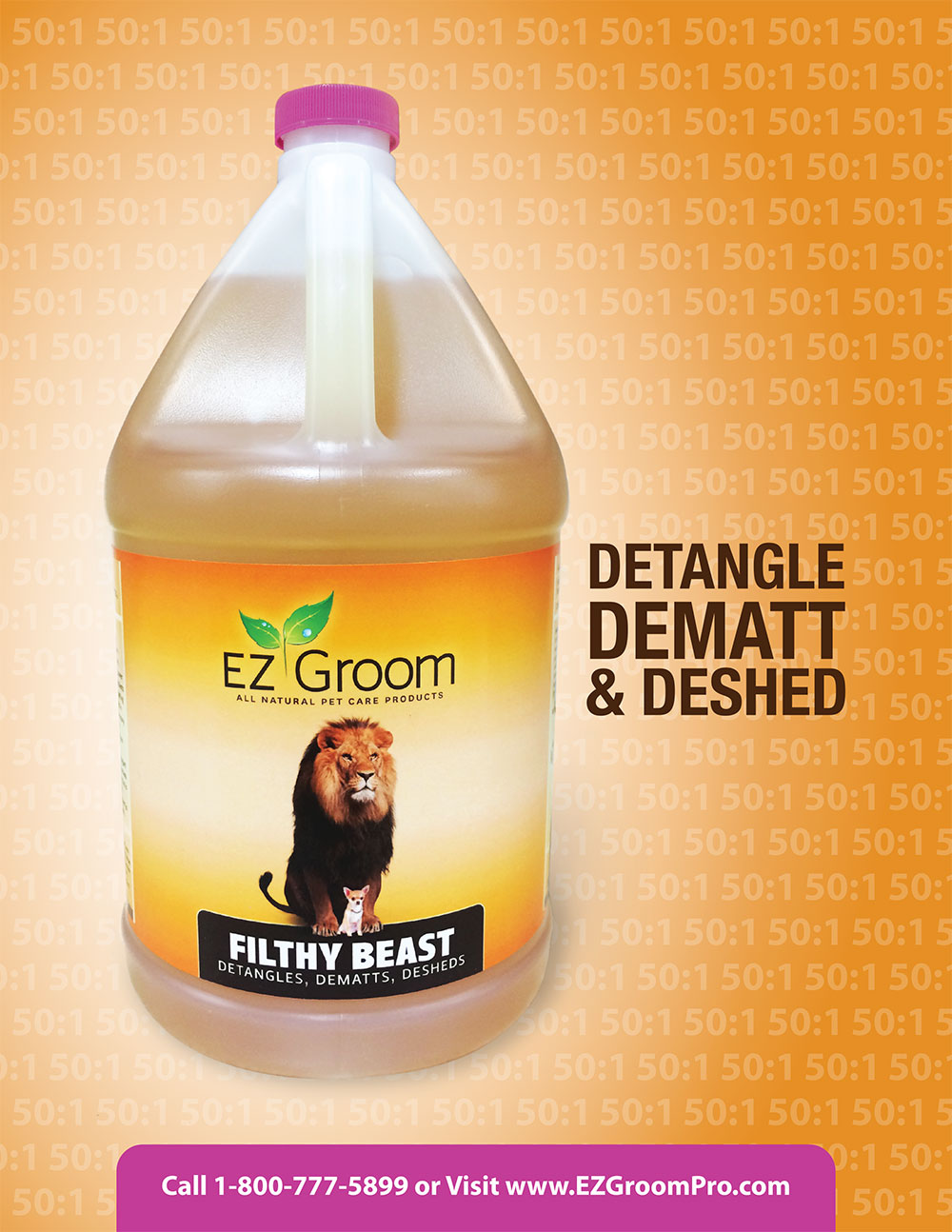

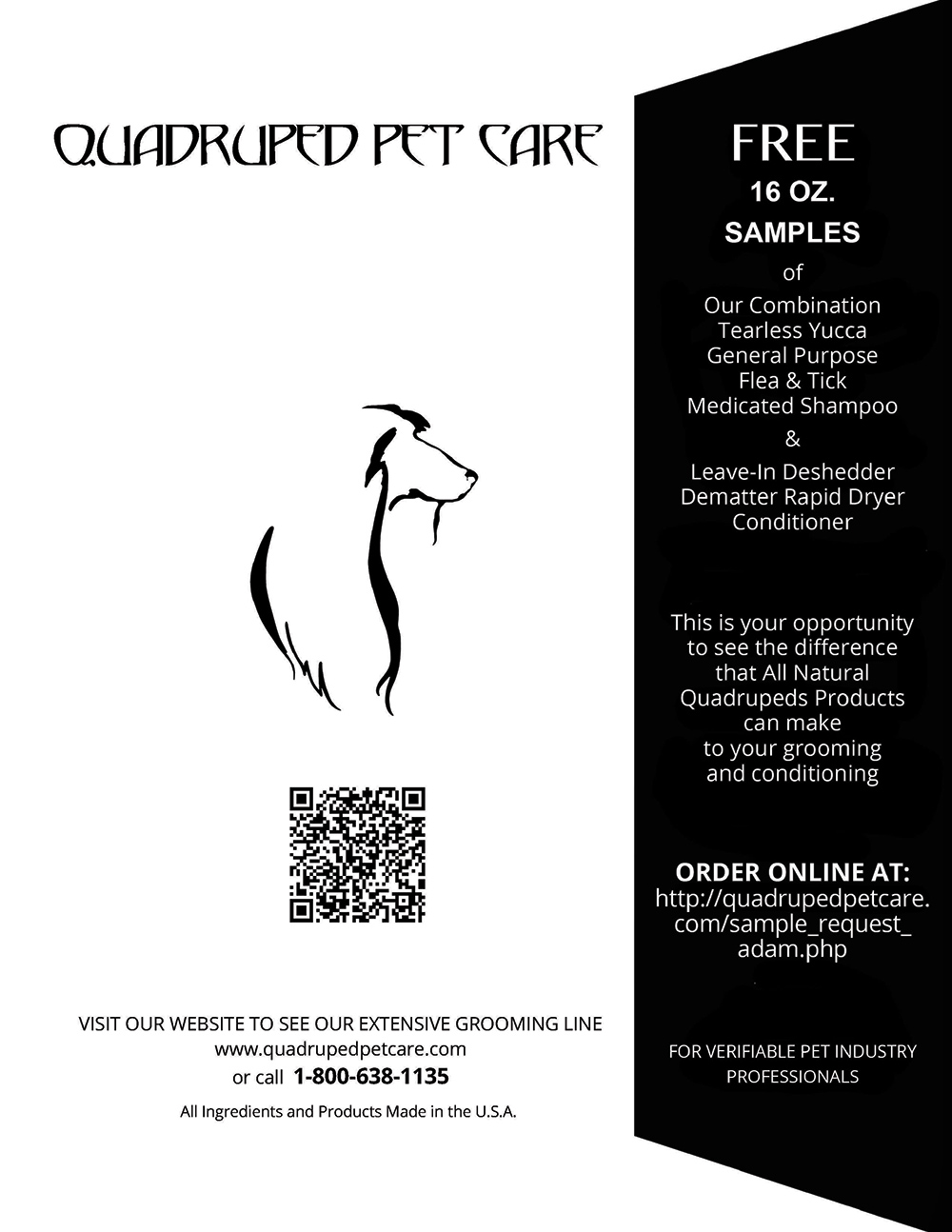





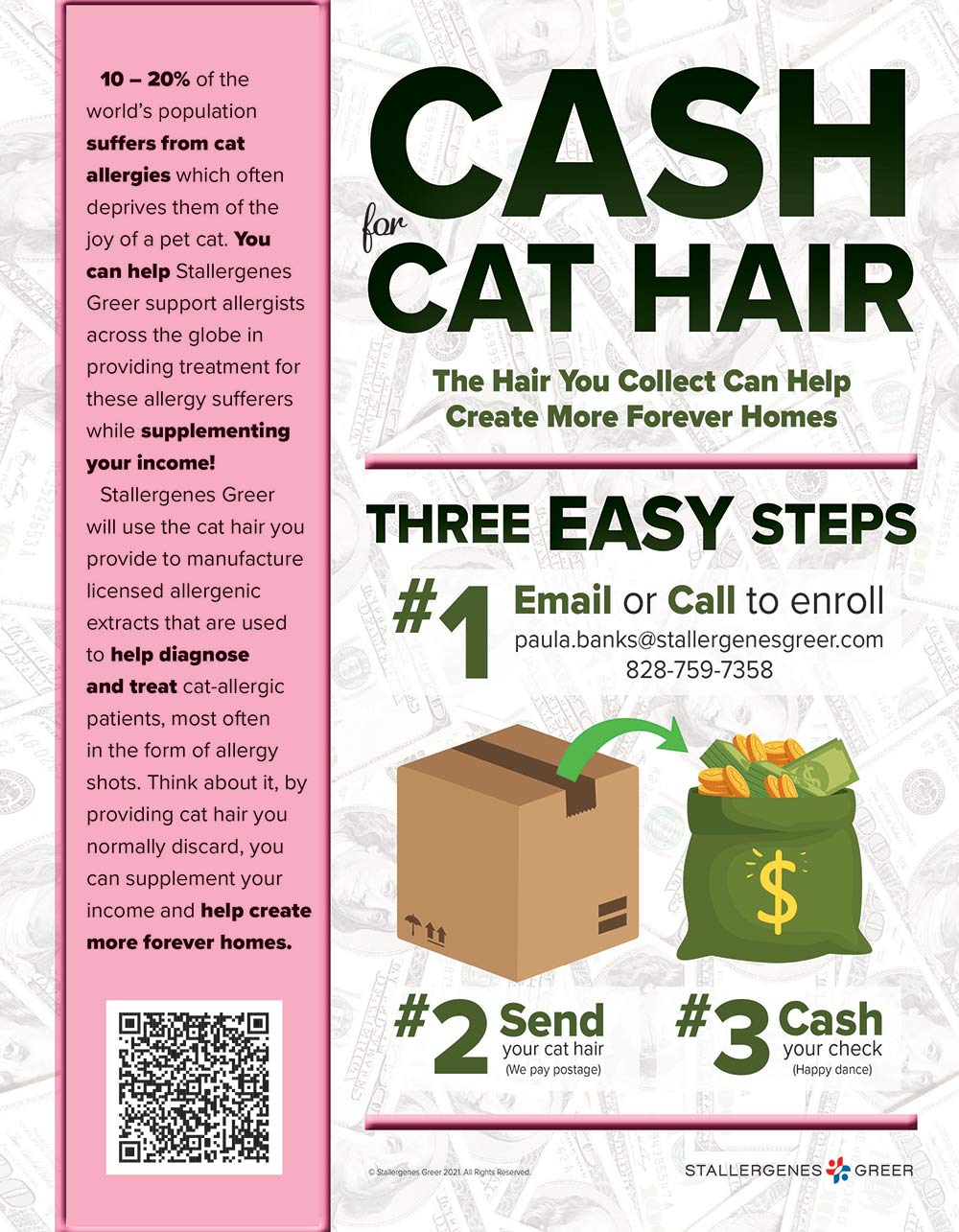

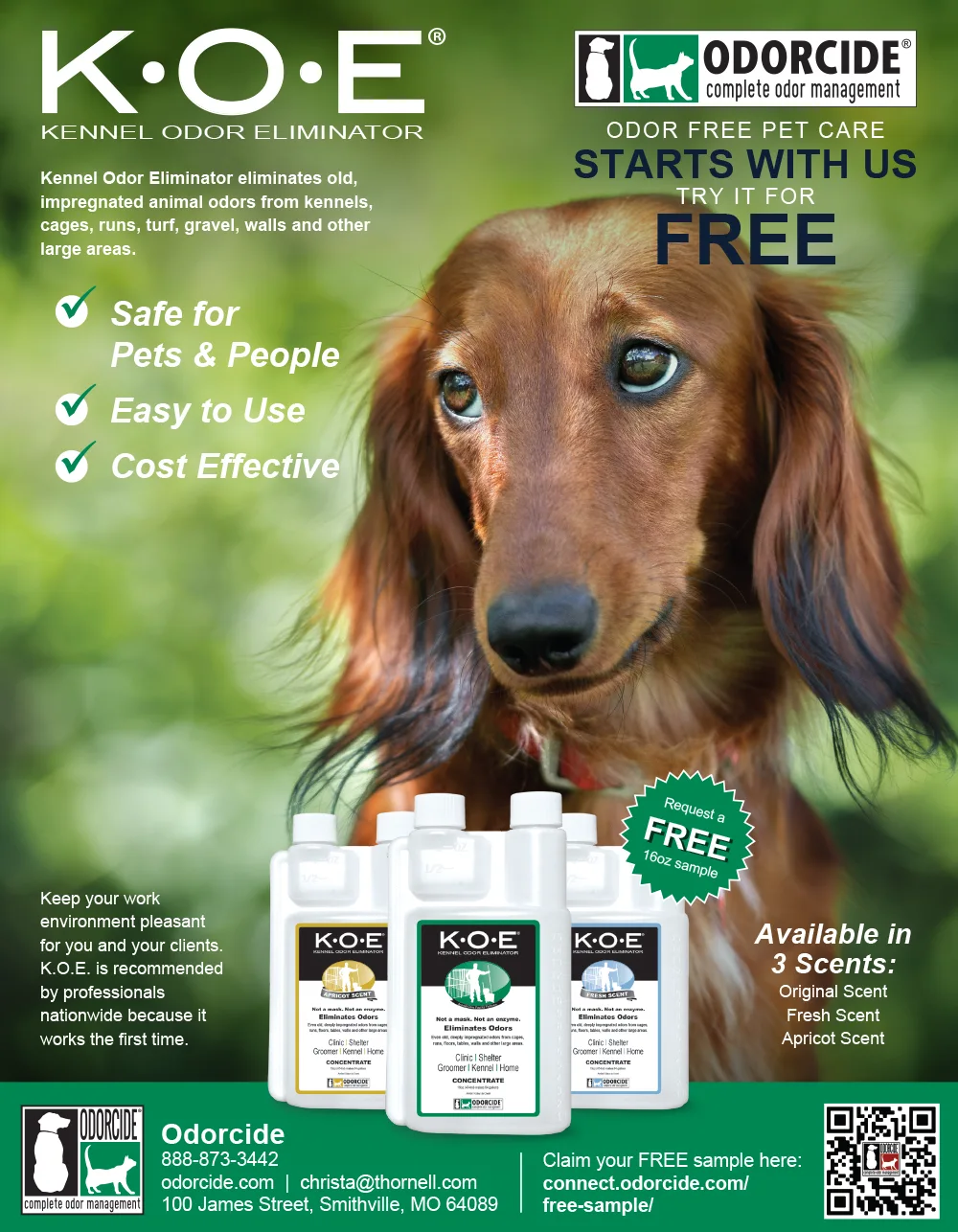
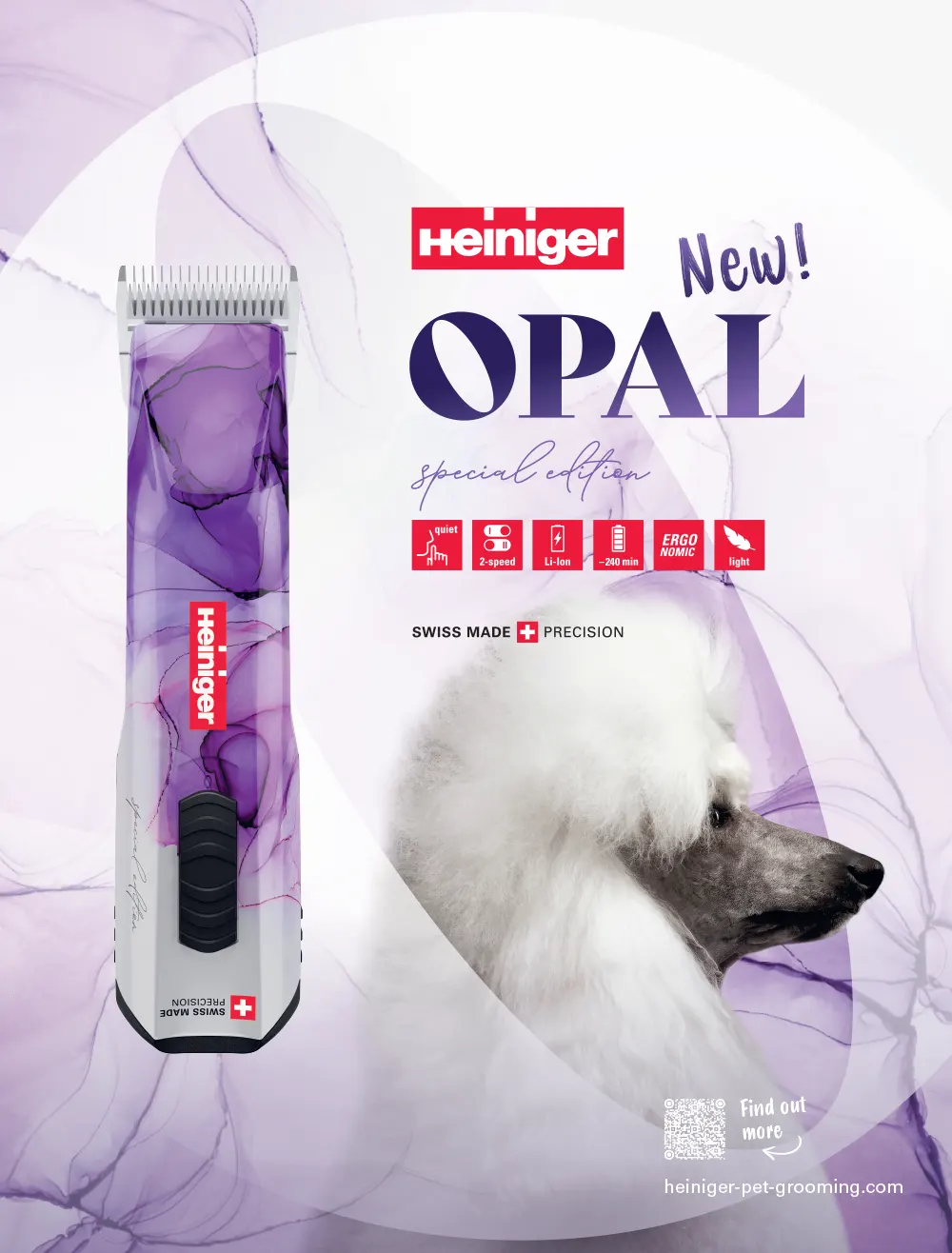


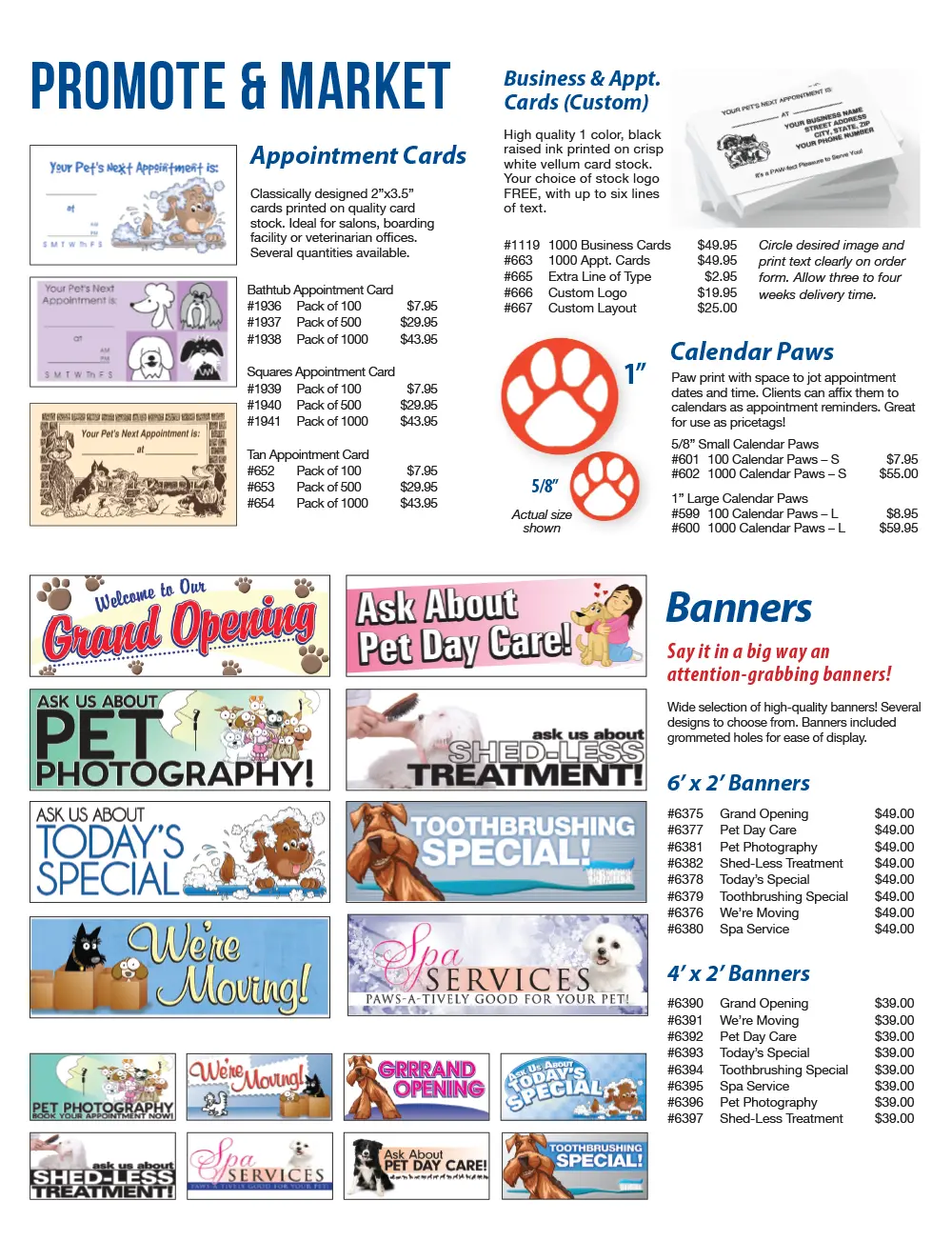

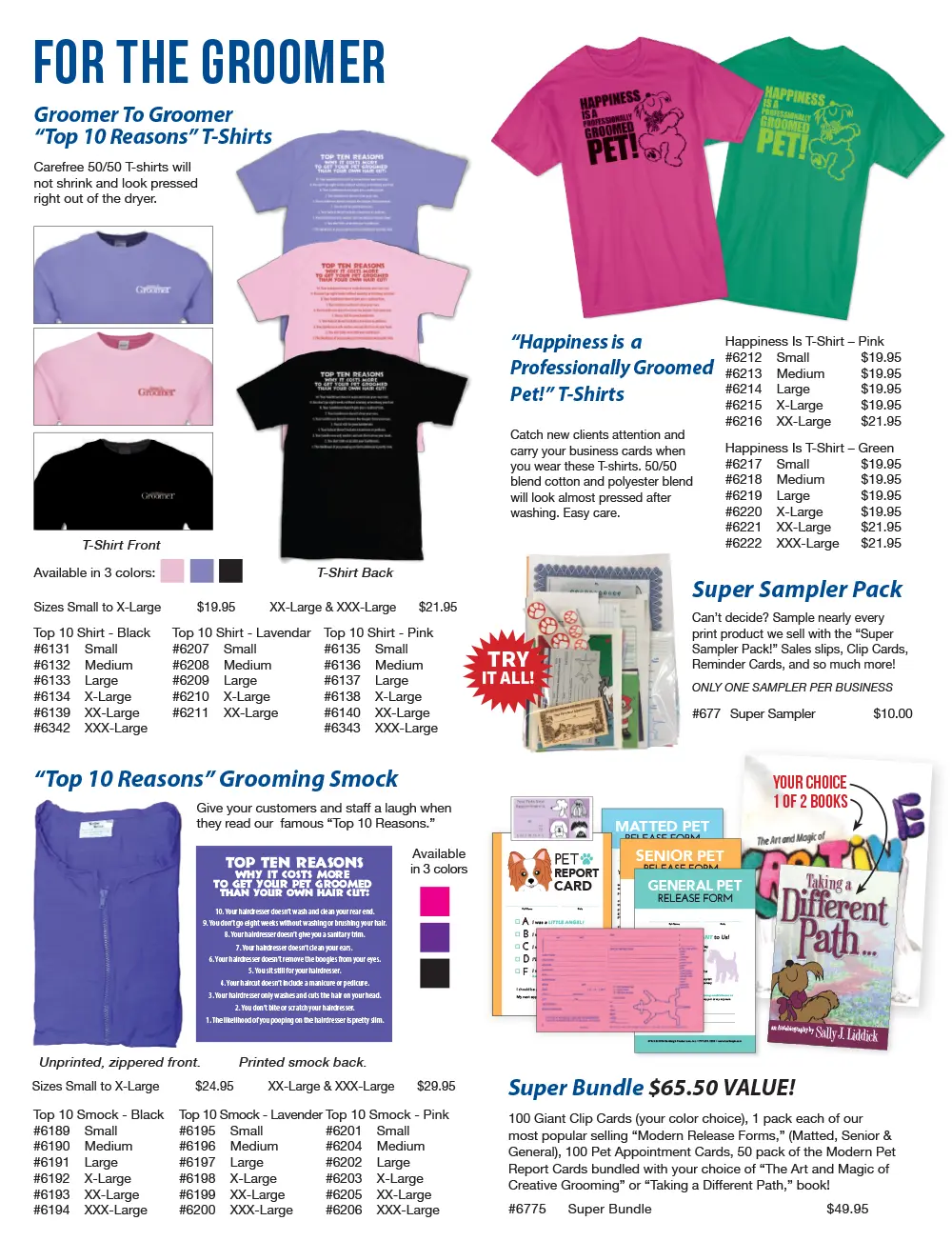
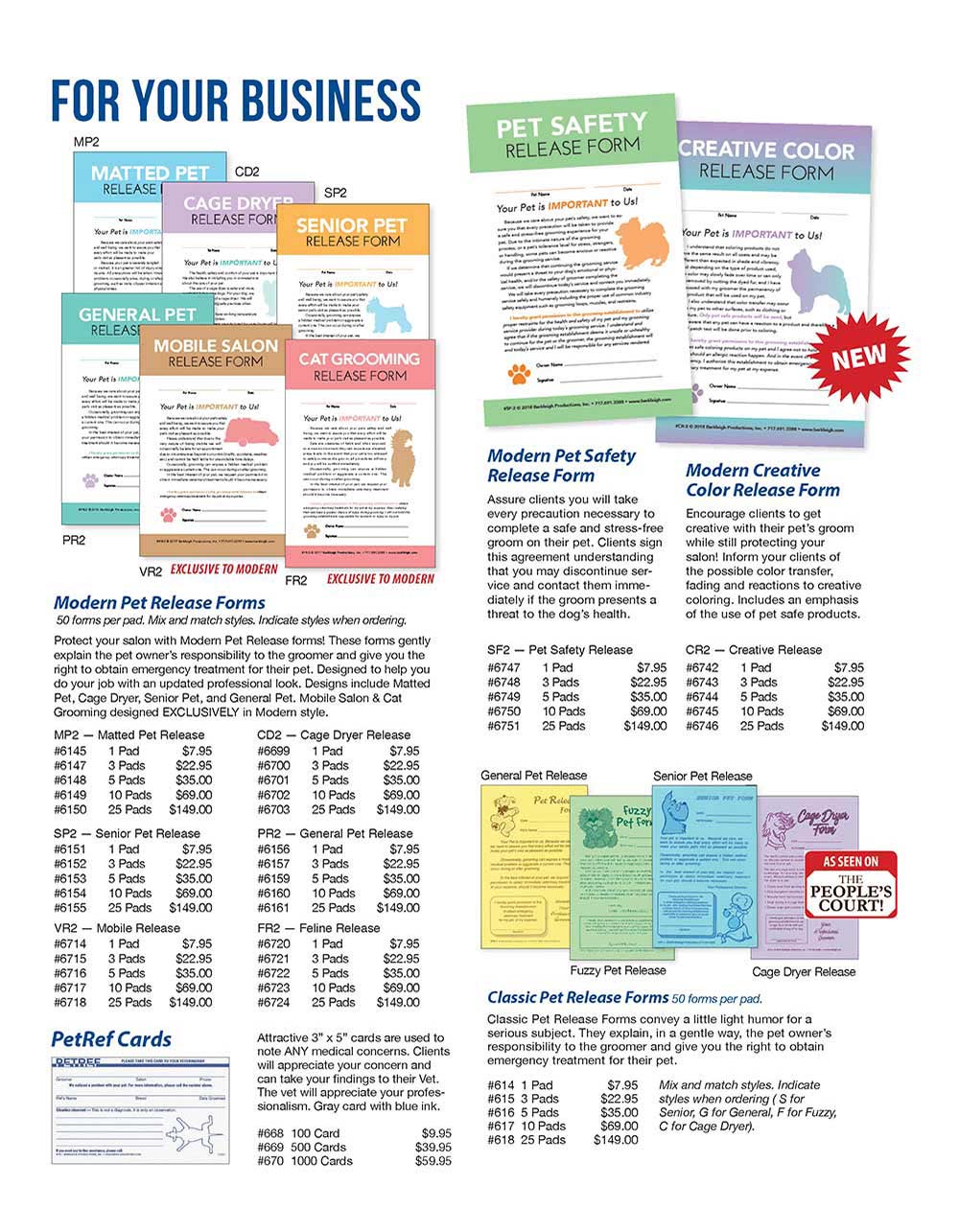
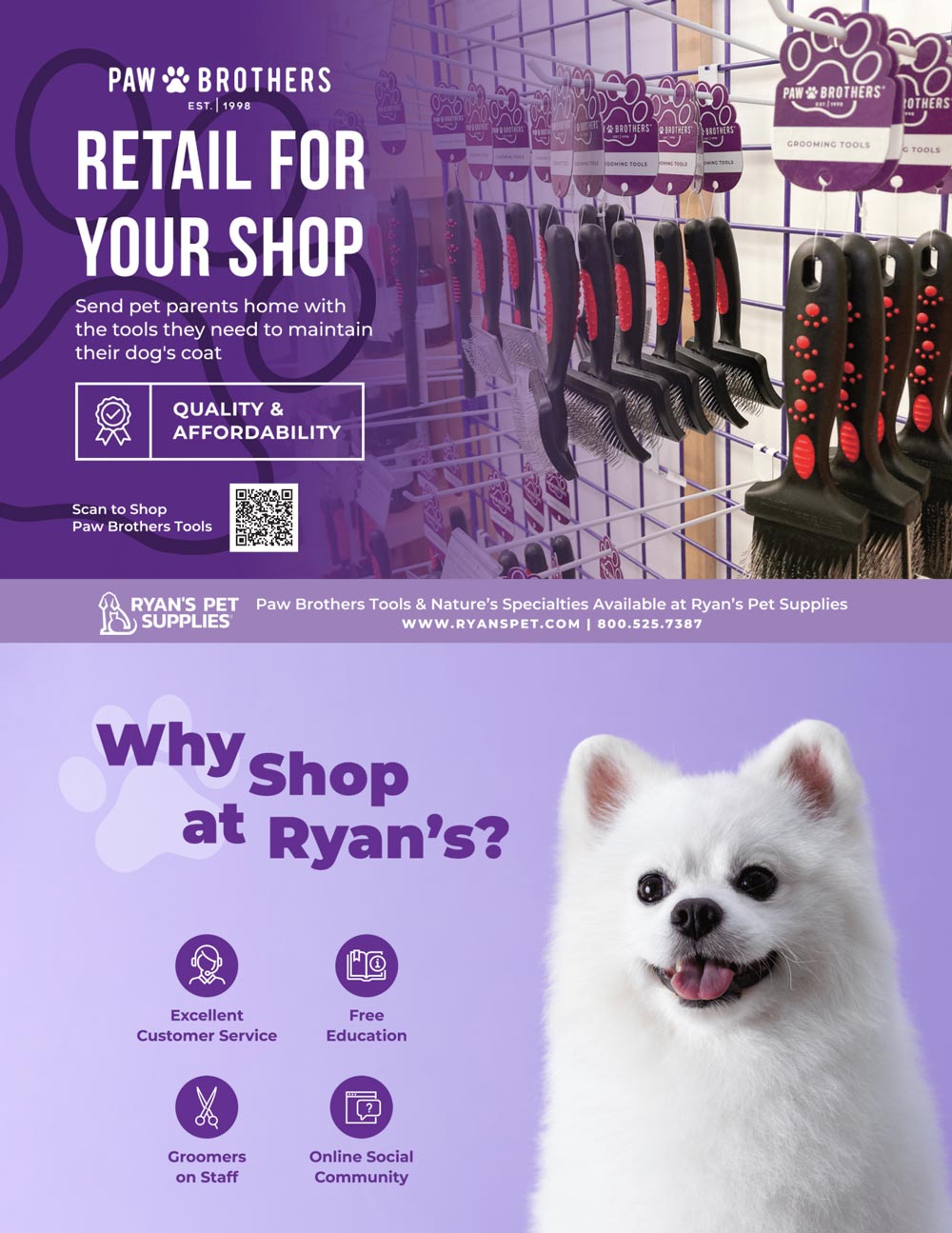

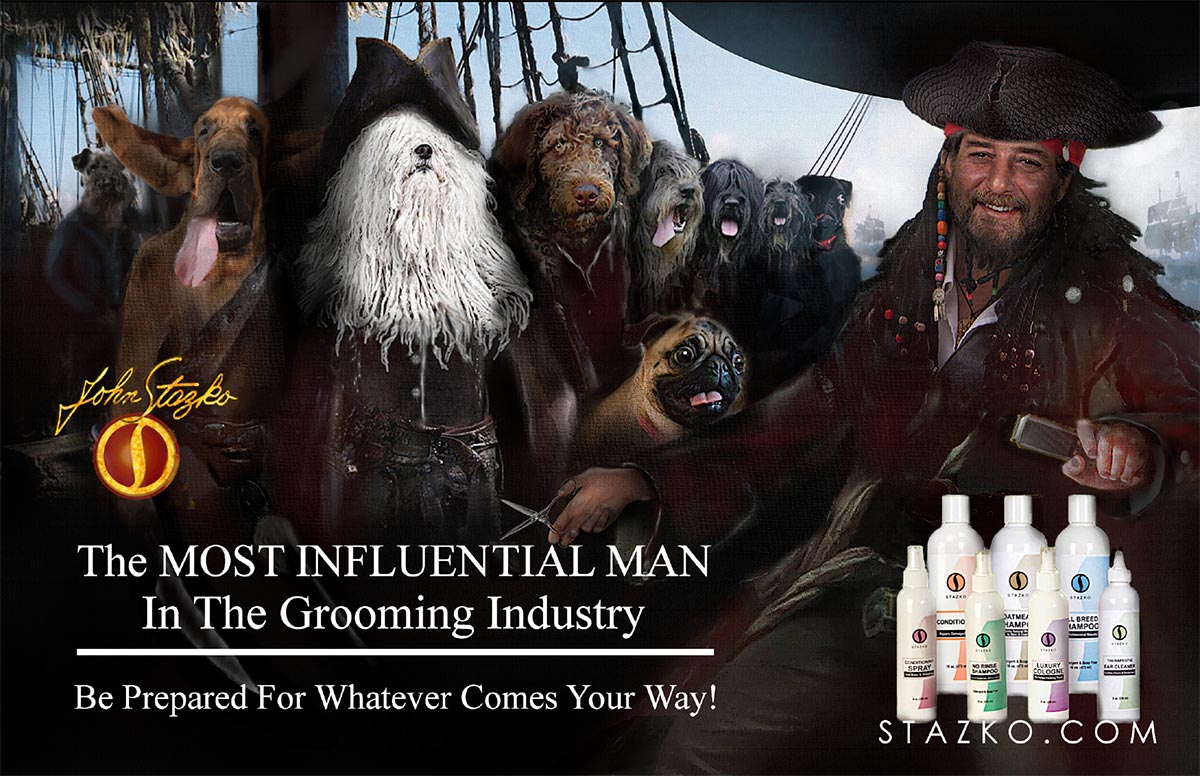
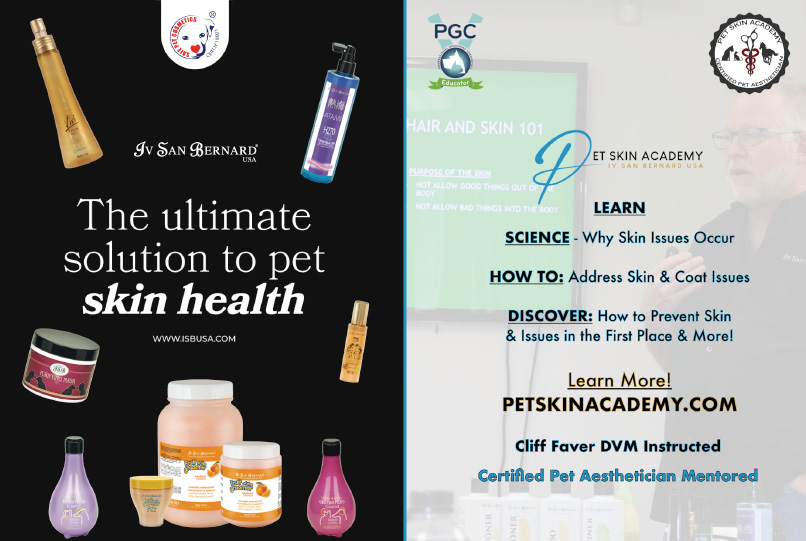

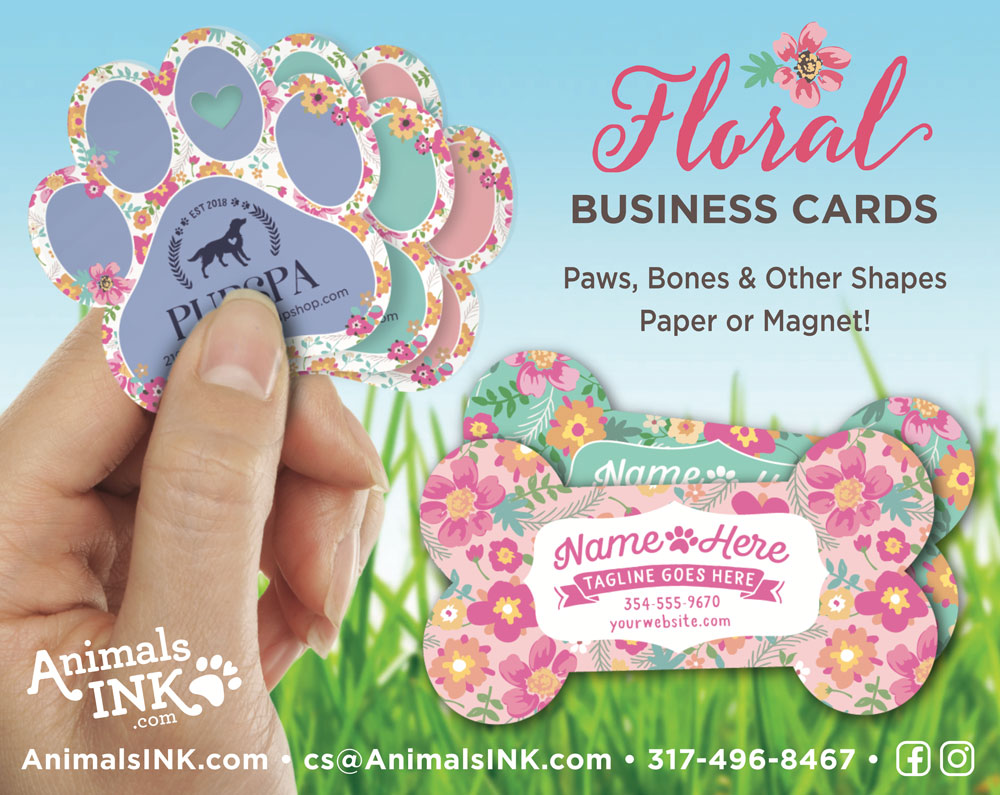
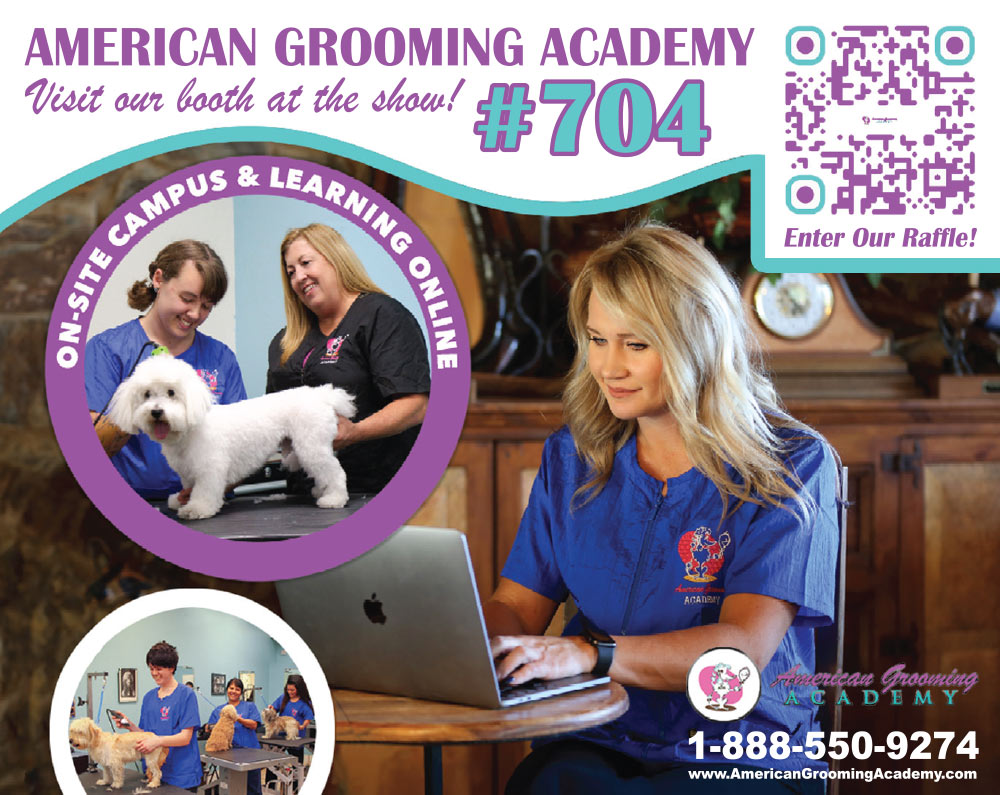

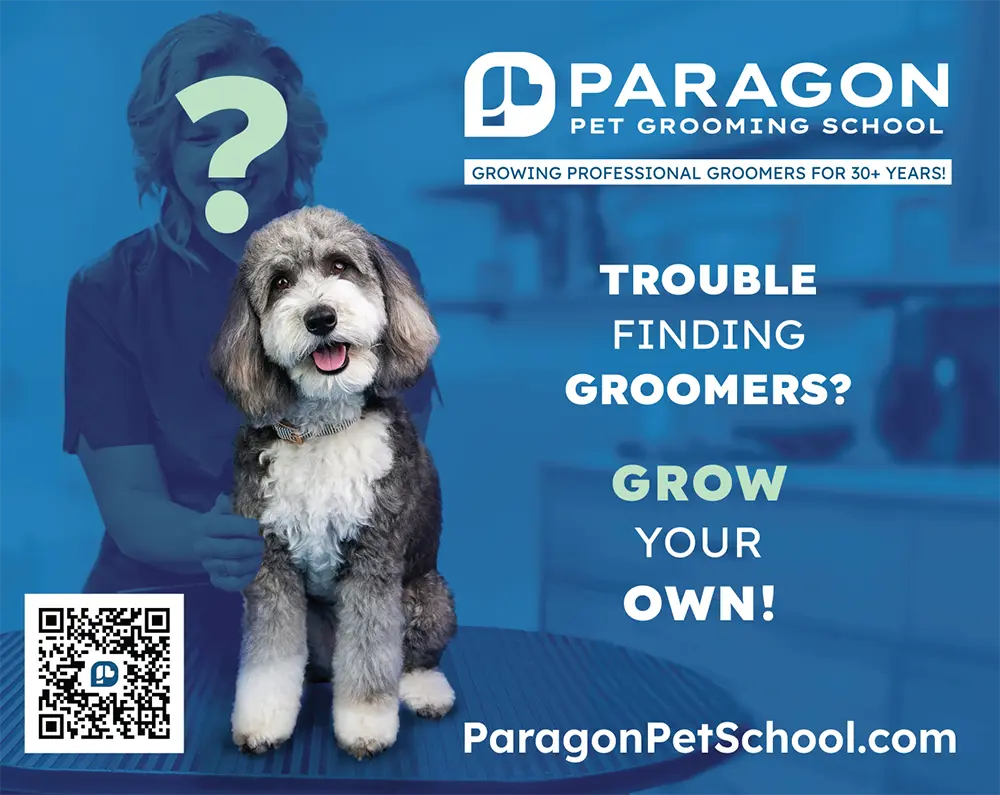
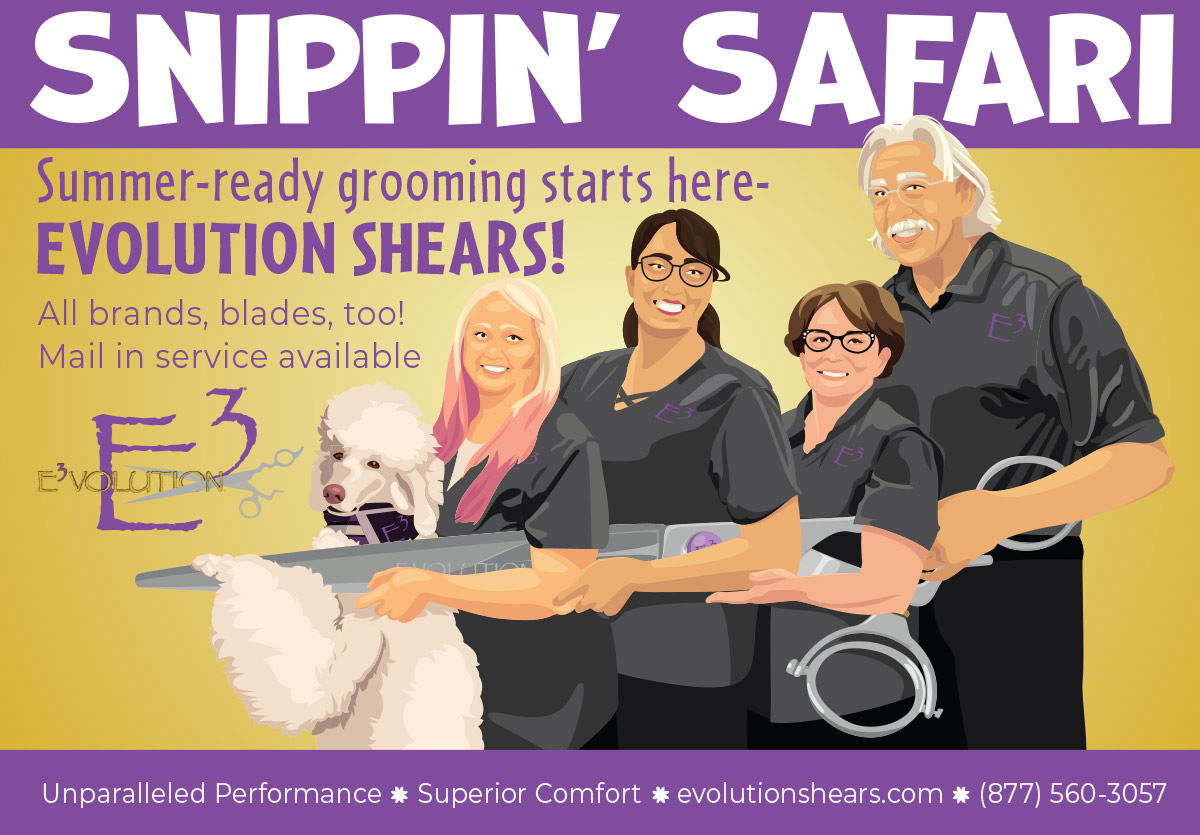
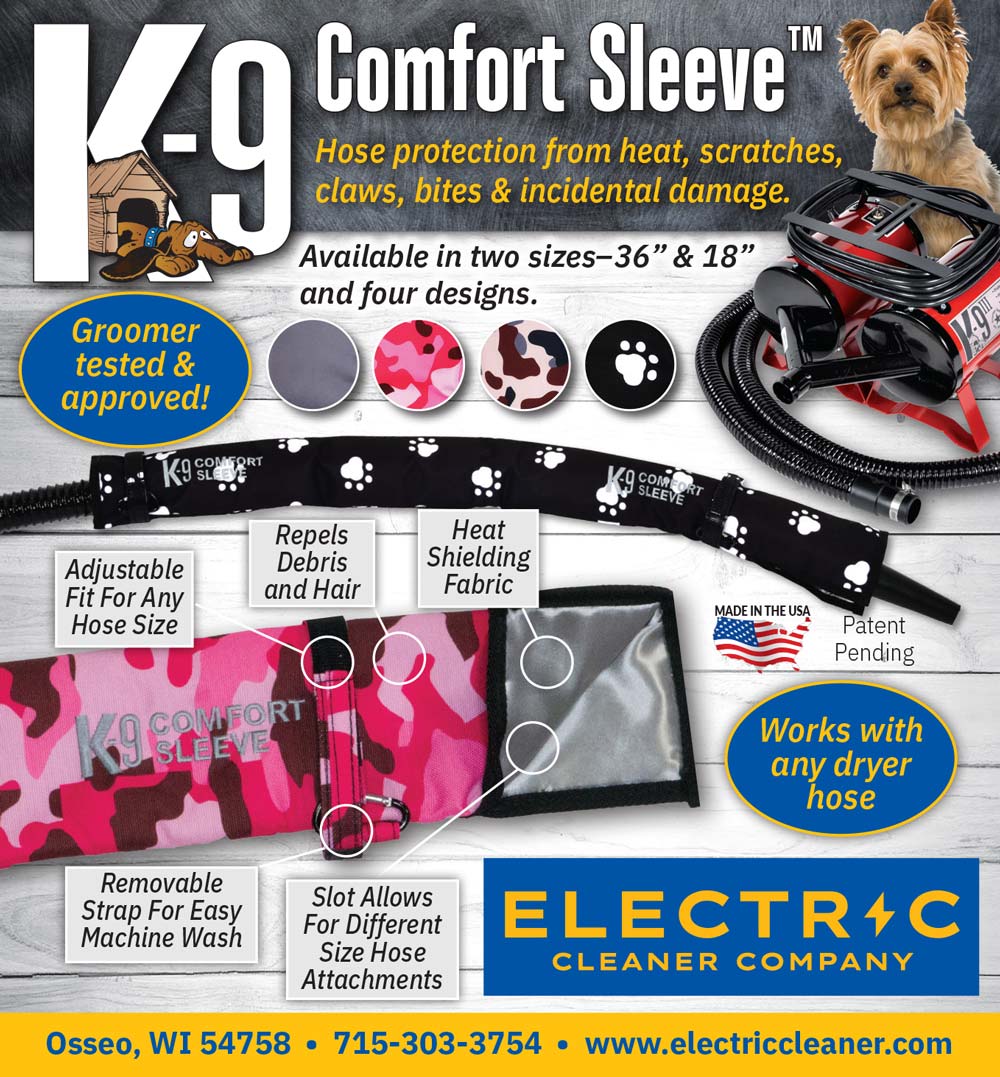
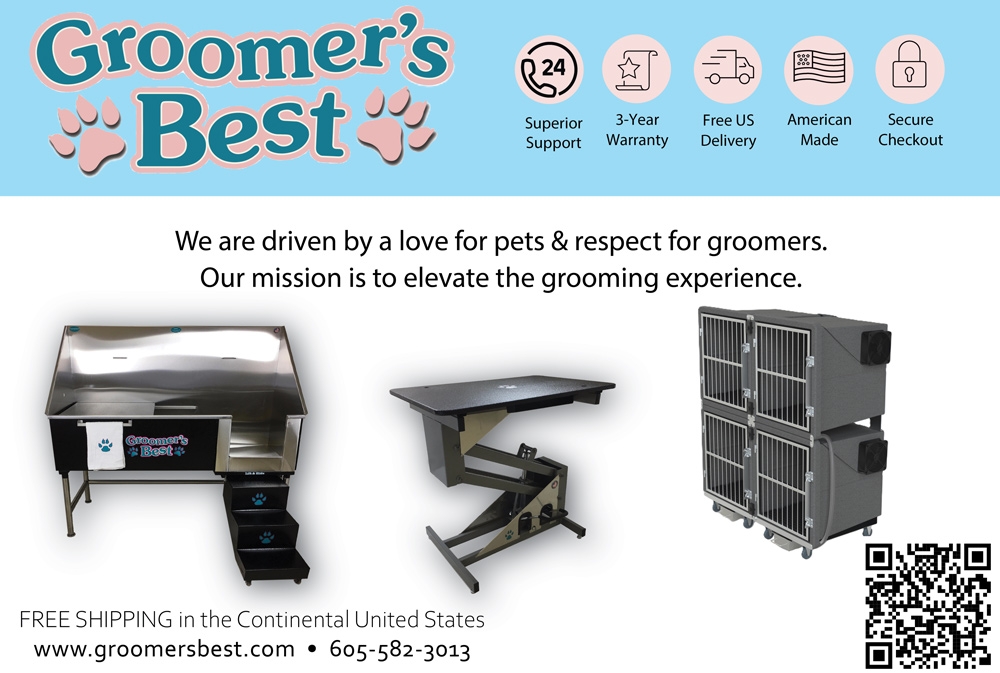
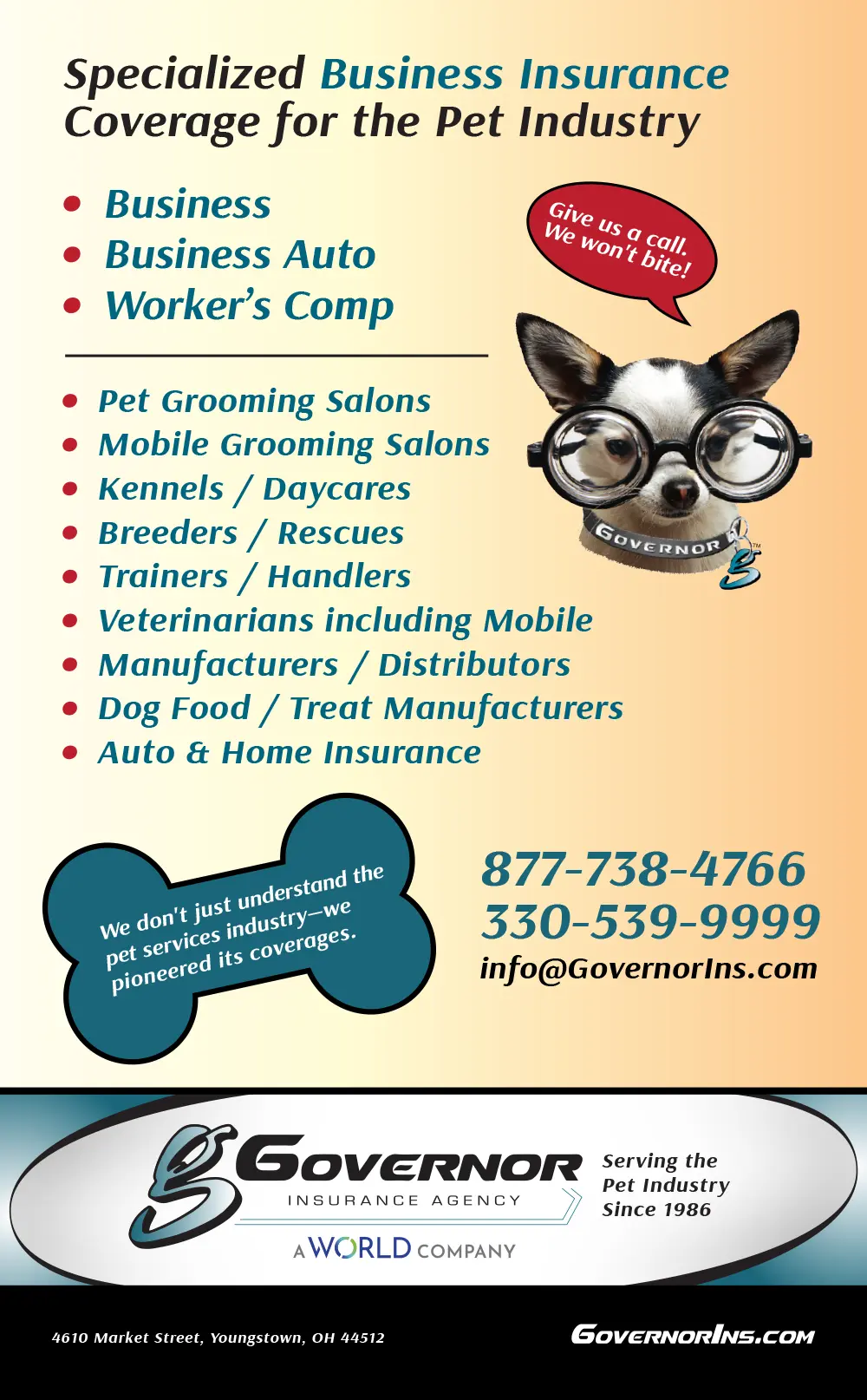
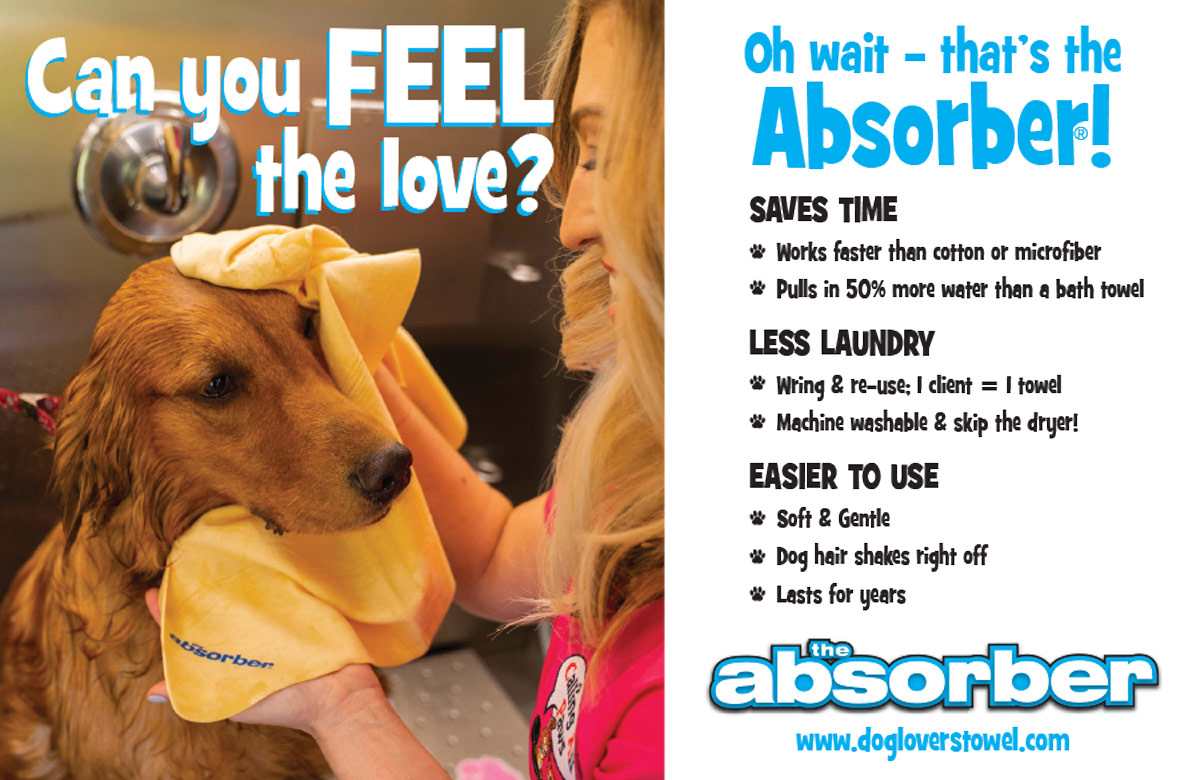

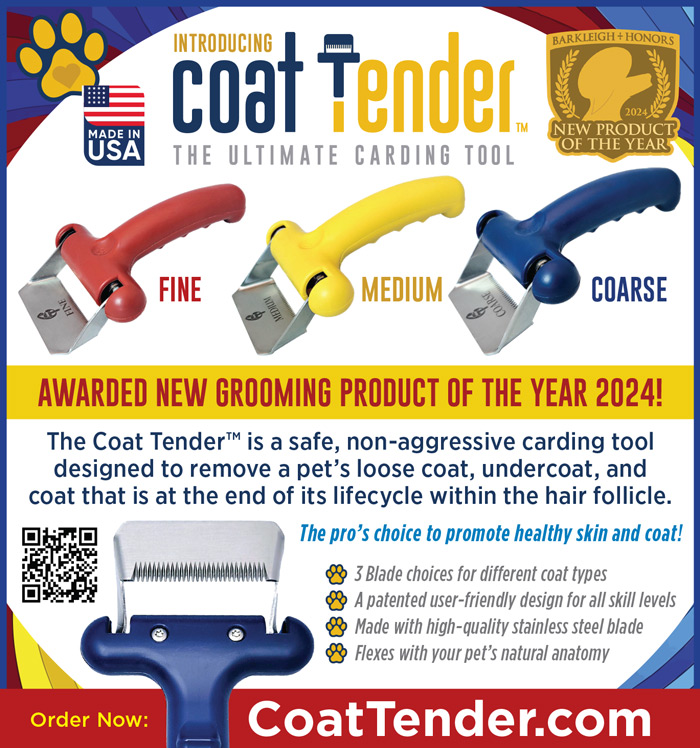
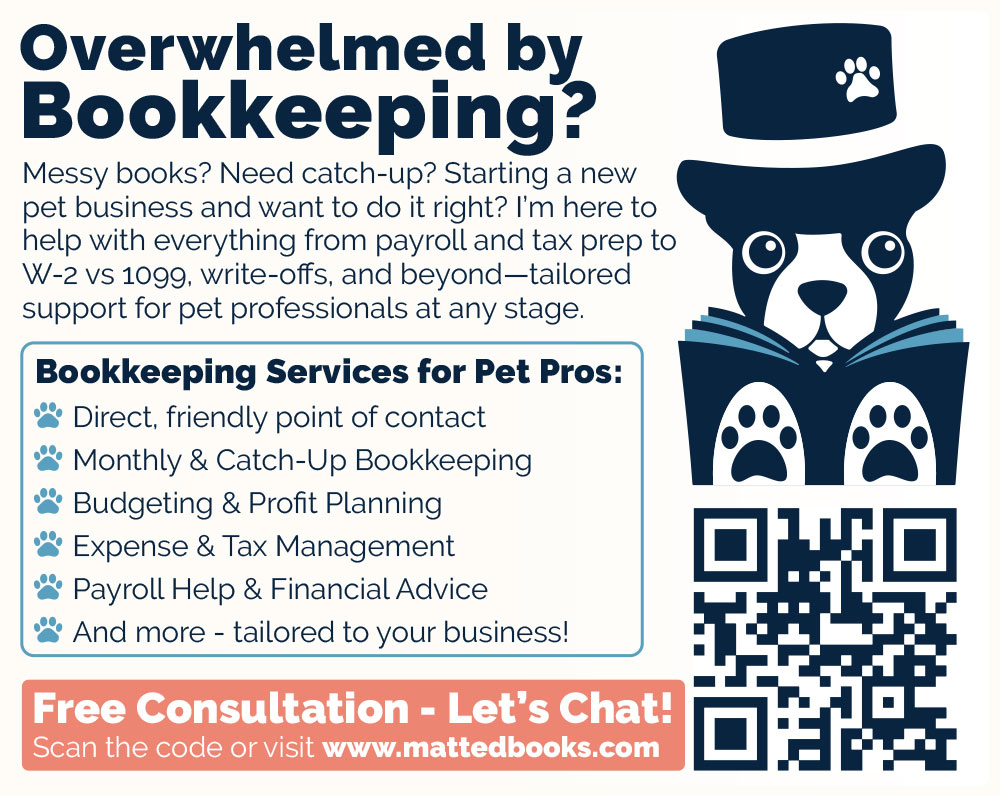

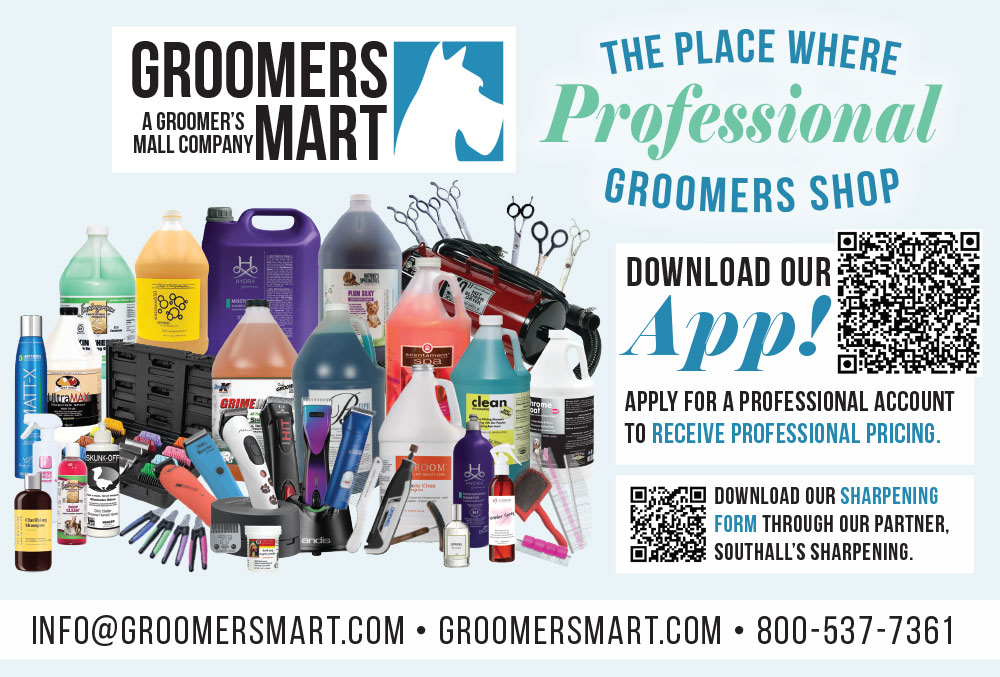



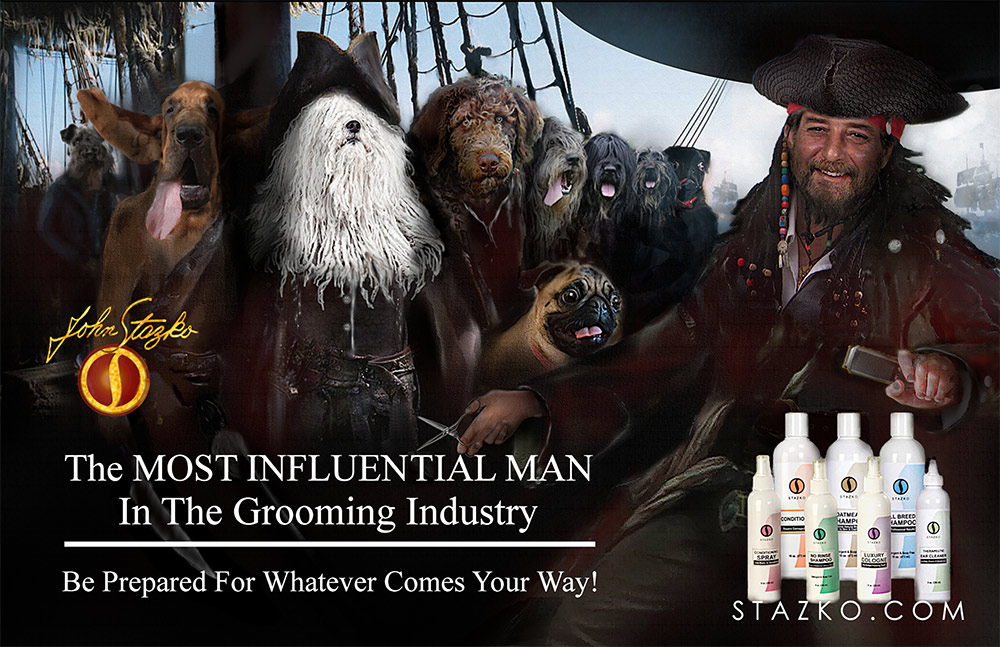
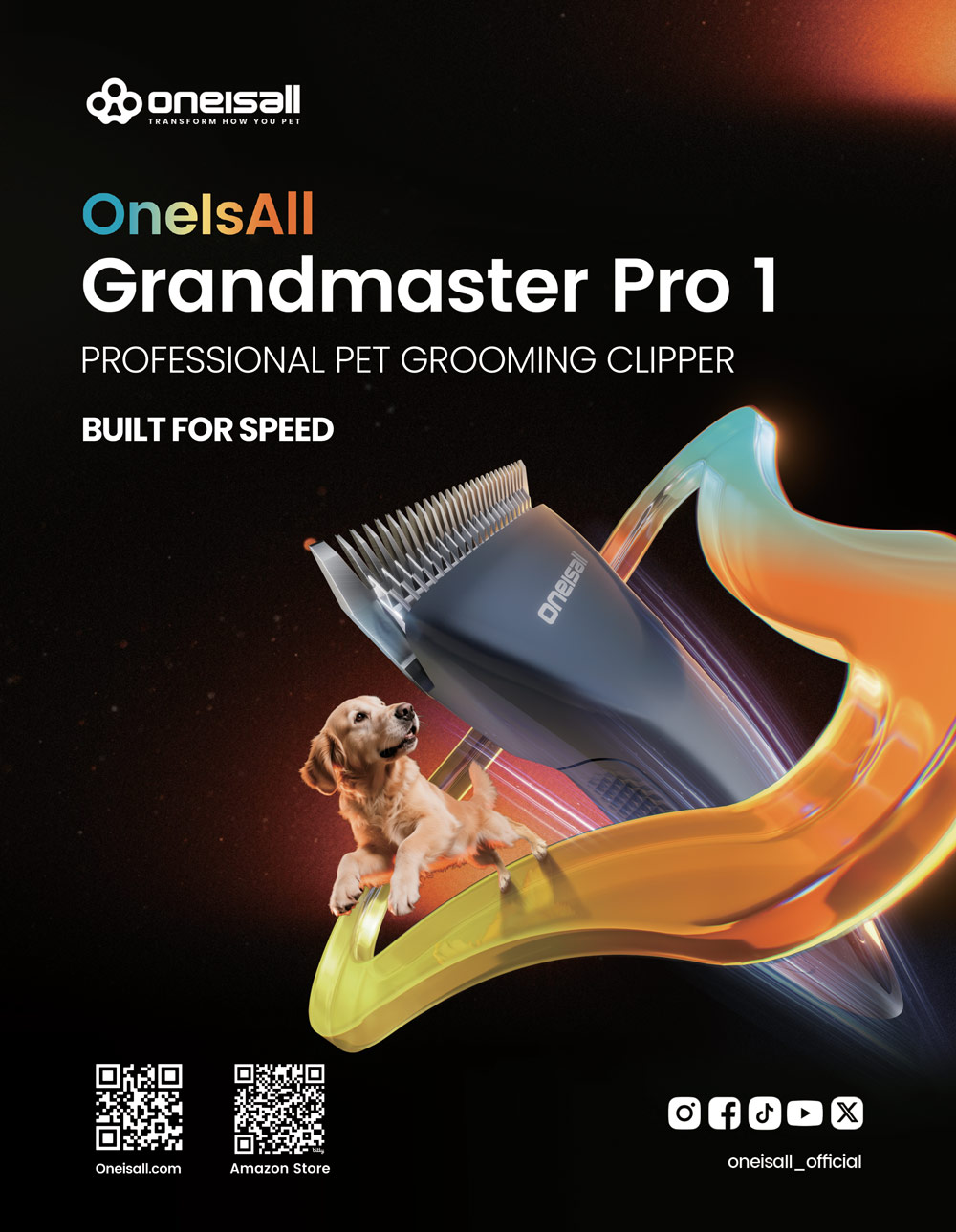



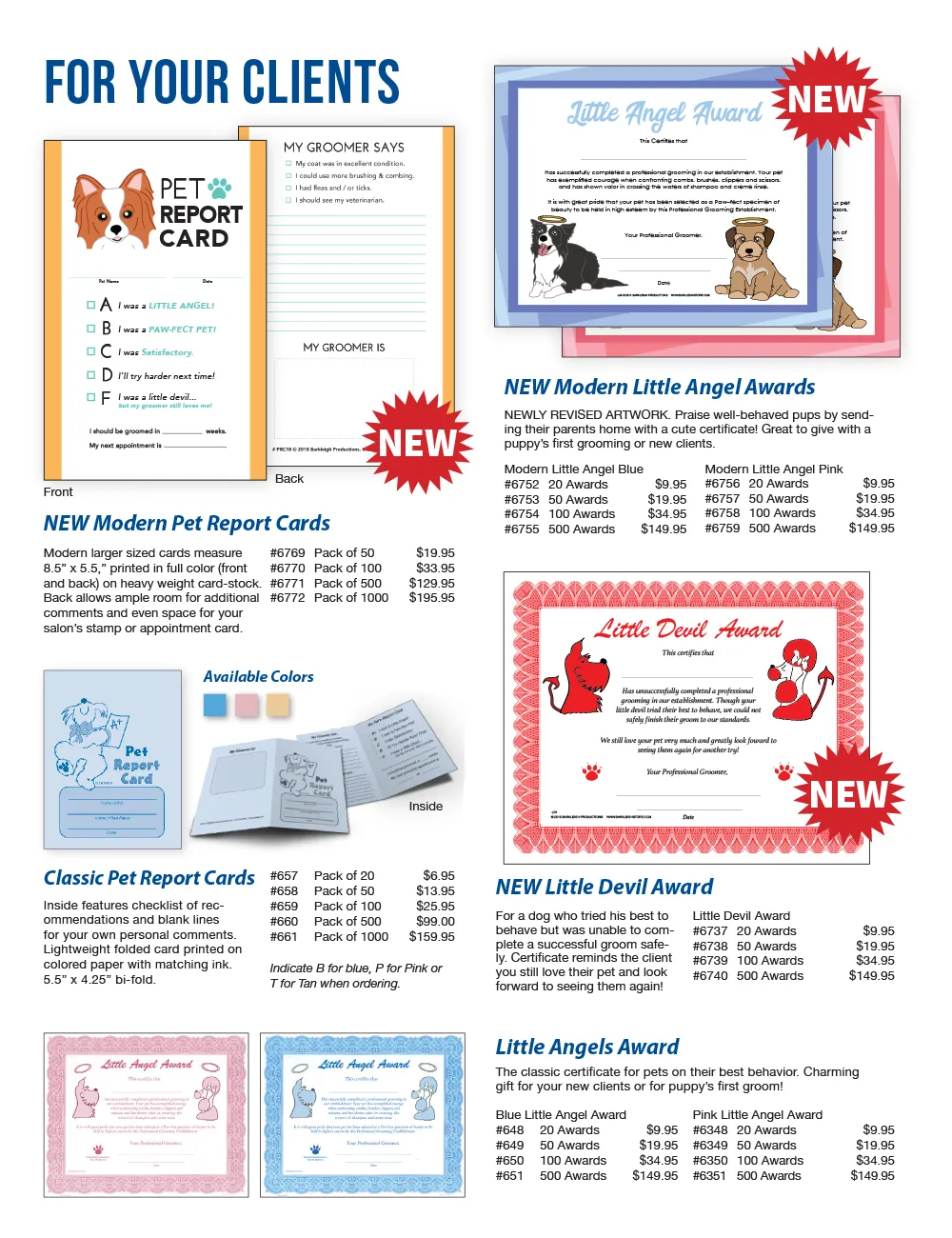
by Kelsey Ann Sexton
Here are five ways that I use tech and social media to enhance my grooming life, without adding to the chaos:rooming life, without adding to the chaos:
What works best?
No more chasing texts or answering grooming questions during dinner. Set the tone and your clients will follow!
Likewise, digital scheduling systems let you run reports on your busiest days, top tippers and no-show offenders. It’s not just data—it’s your business strategy.
You are allowed to be a modern groomer. You can be both artistic and organized, soft and strong. Tech and social media aren’t “extra work” when used correctly; they’re extensions of your voice, your boundaries and your business. Let them work for you, not against you.